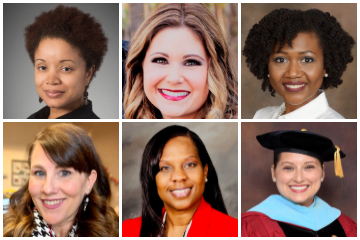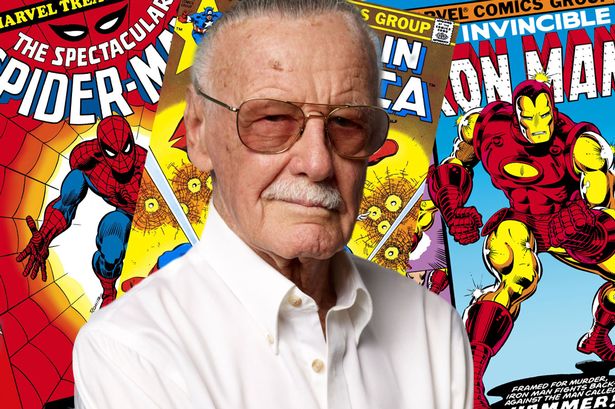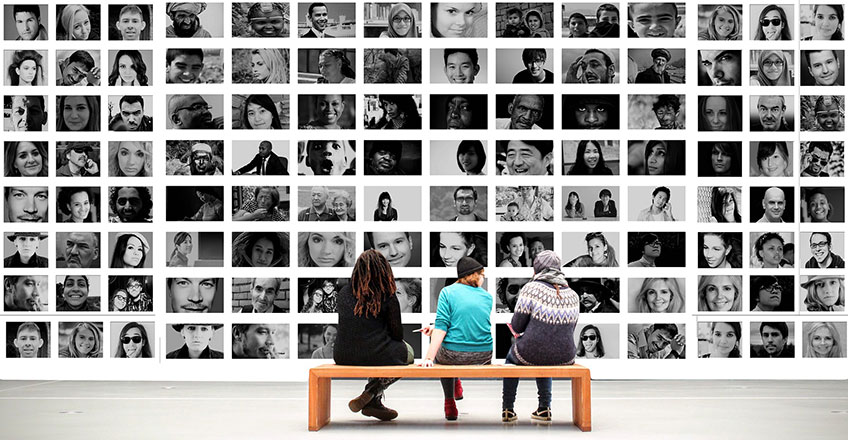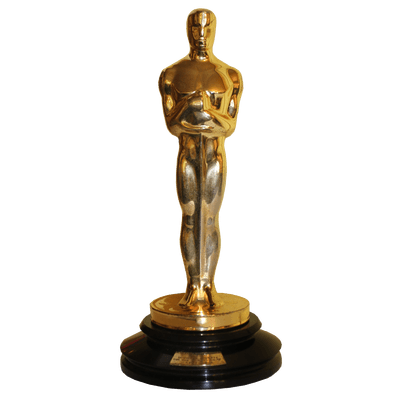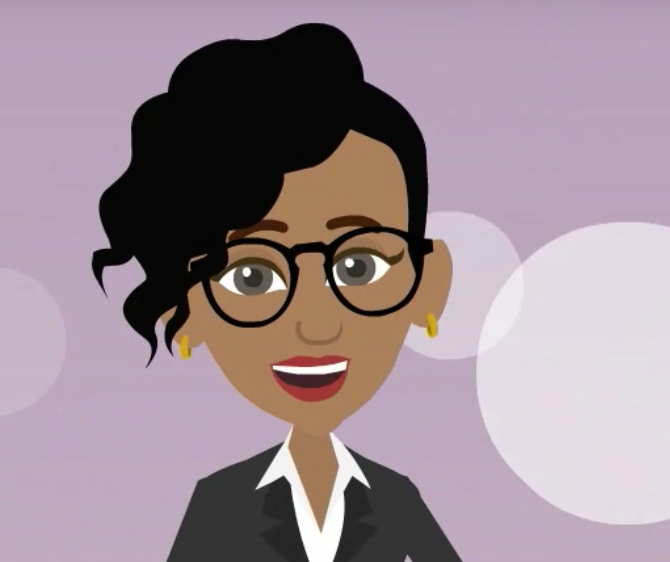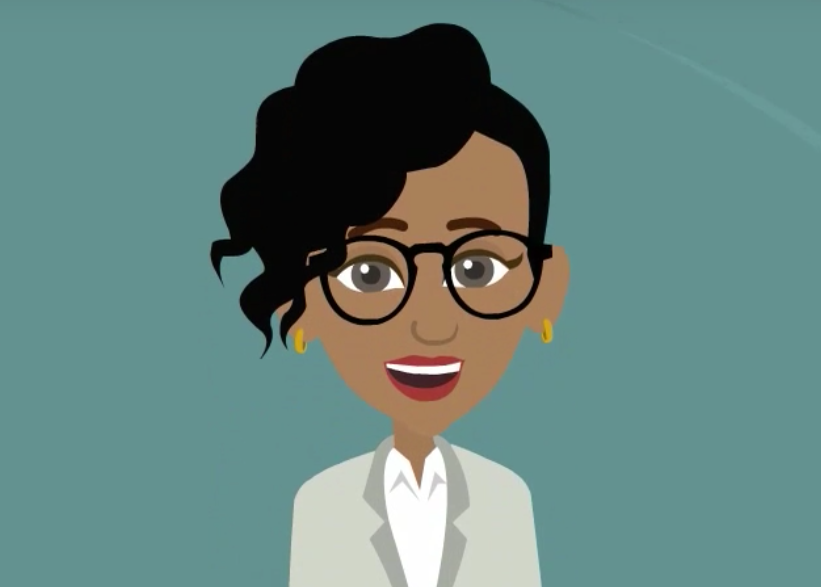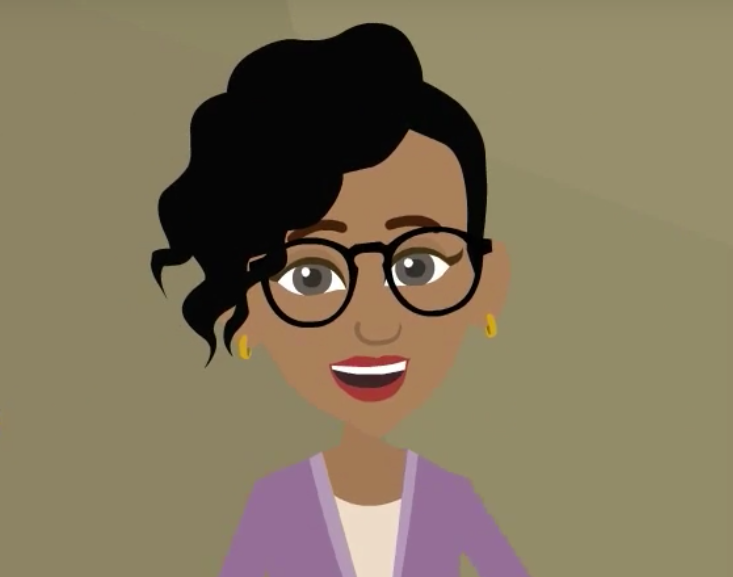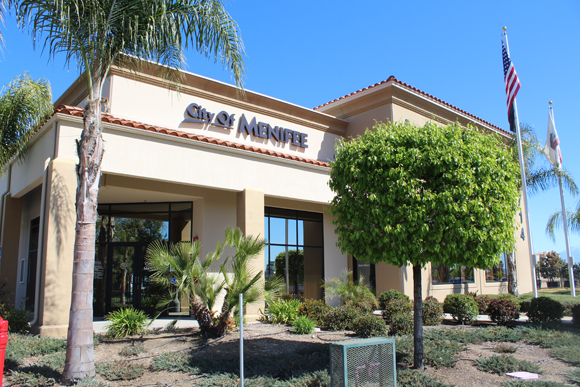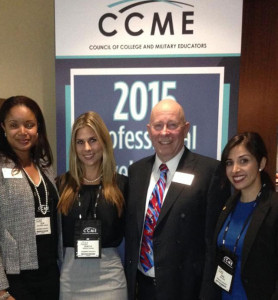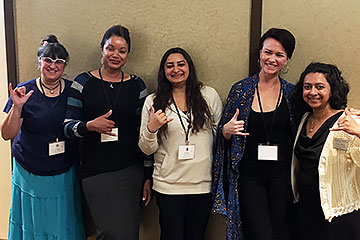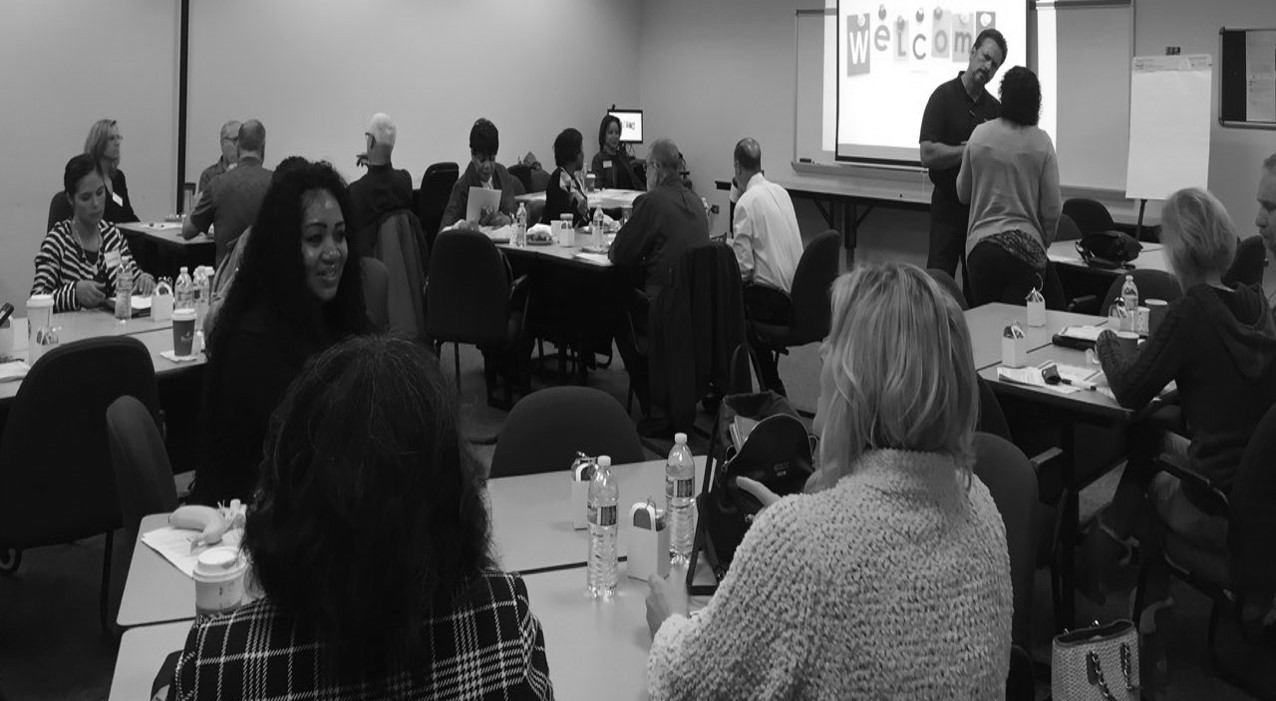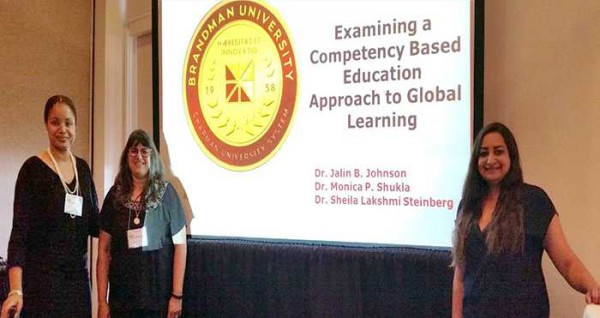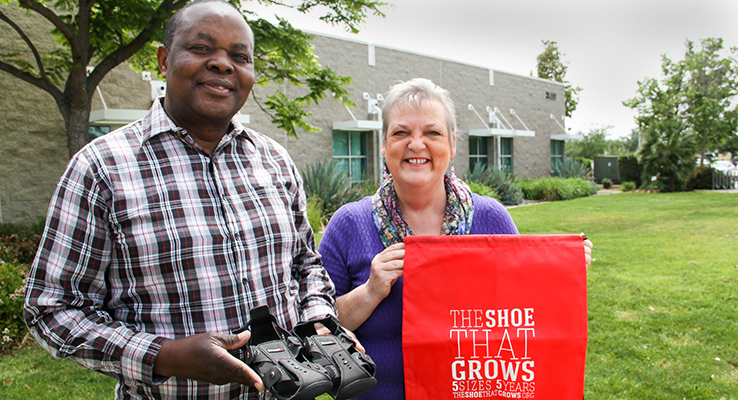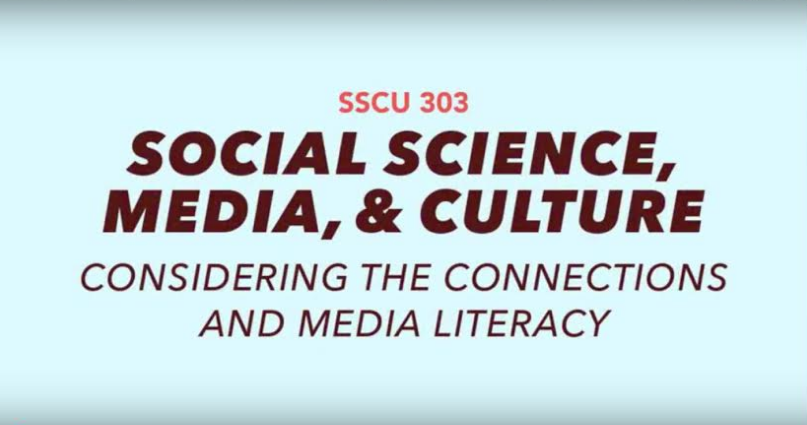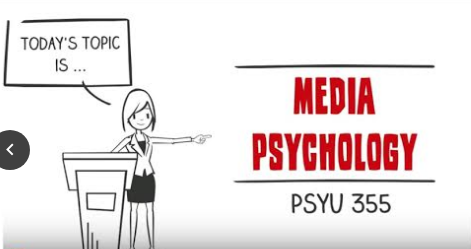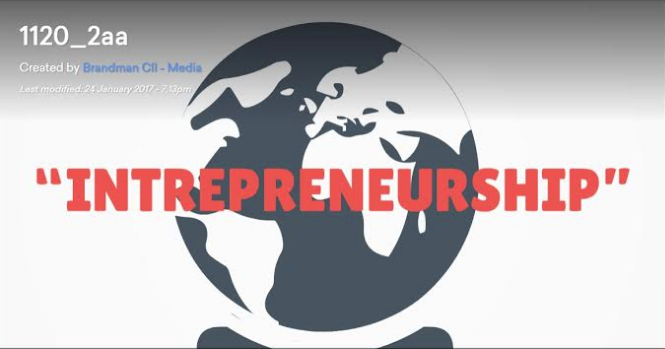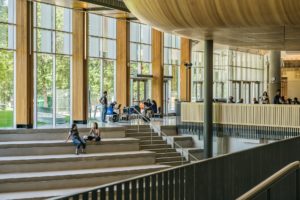February 2024 issue of Higher Education Digest® Magazine
Featured inside #WeAreTheCitation by Dr. Jálin B. Johnson

We Are the Citation – Honoring Lived Experience within Academia
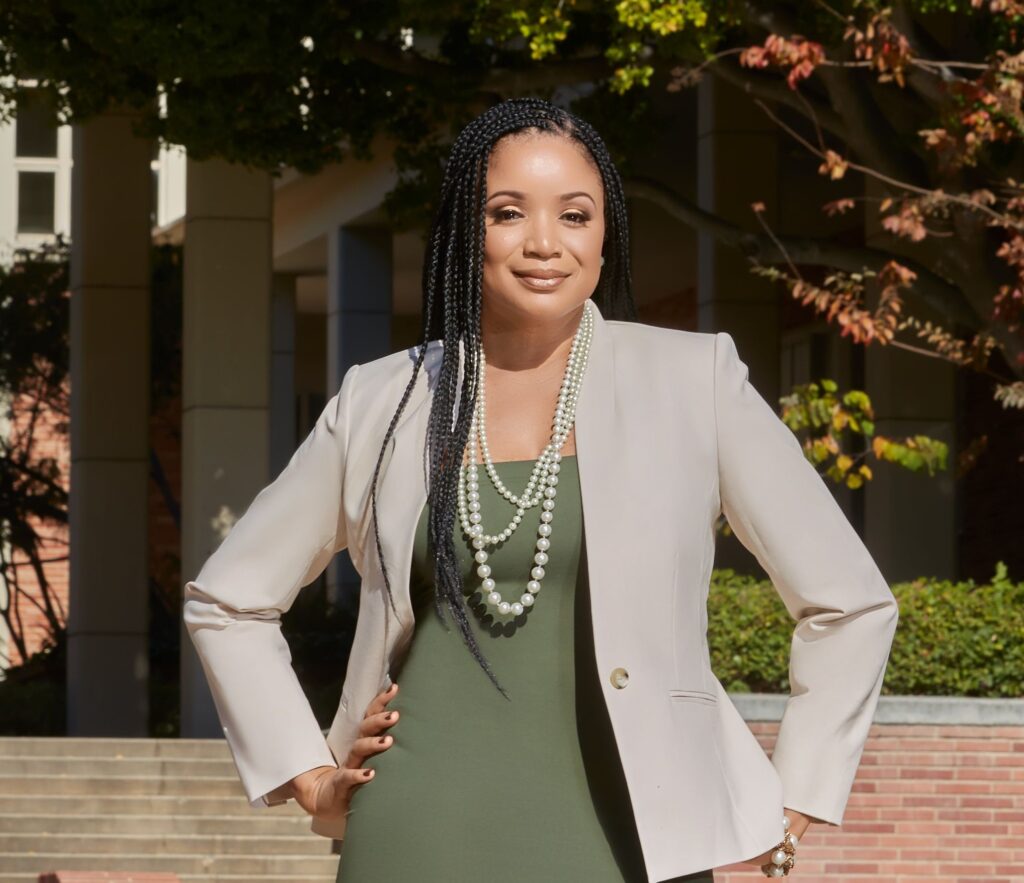
In the early fall of 2023, I shared the hashtag #WeAreTheCitation as part of a social media calling associated with amplifying the voices of Black Women and members of the global majority within higher education and in spaces of scholarship.
Much like the embraced call to “Cite Black Women,” noting that “We are the citation” incites recognition. Doing so requires acknowledgment that the lived experiences of members of minoritized groups are significant and add valued perspectives to scholarly discussion. Additionally, this call denotes that these experiences should be equally valued among commonly cited authors and scholars within institutions of higher education (IHEs). One path towards honoring these lived experiences is accomplished by highlighting them alongside those from groups considered predominant within Western-influenced, IHE scholarship.
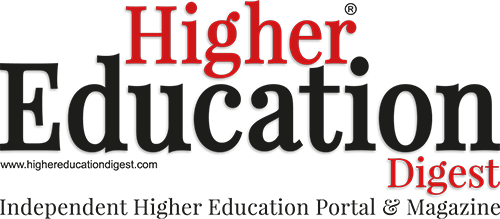
Invisible Labor and Emotional Currency
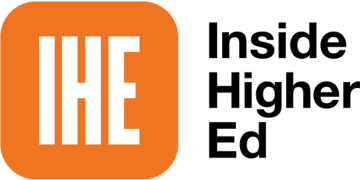
Jálin B. Johnson, Nakisha Castillo, Natalie V. Nagthall and Hawani Negussie describe the unseen impacts of higher ed’s cultural taxation on minoritized faculty and eight steps to help diminish those impacts. (October, 2023)
FUEL 2023
Inclusion & Diversity Panel: Inspirational Leaders discuss how Inclusion is key to the success of a digital future
• North America • Brazil • Europe • Australia • Japan • Southeast Asia •

Five Ways to Support Your Diversity Officer – Attainable Action Steps for Leaders and Managers
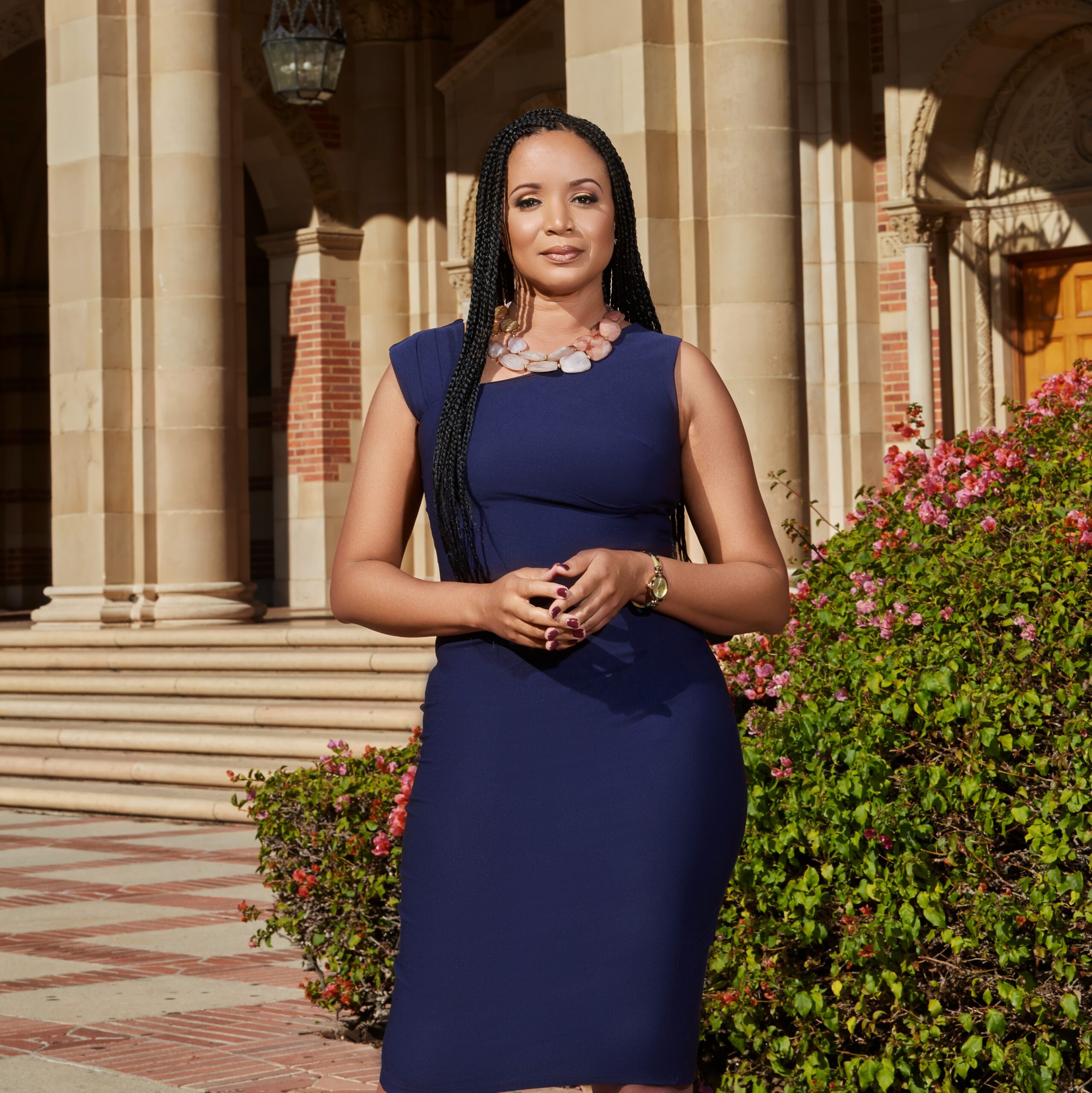
UMass Global community encouraged to view Black History Month as an invitation for year-long learning
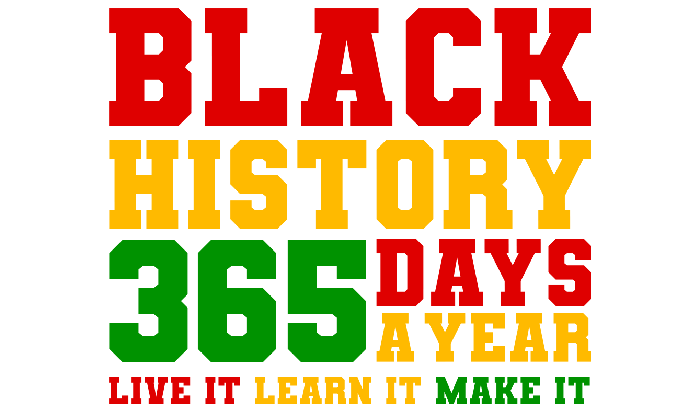
“In this year alone, we have navigated the suffering surrounding mass shootings in our communities, publicized confrontations for human rights, social injustice, inhumane loss of life, and global tragedies, said Dr. Jálin B. Johnson, vice chancellor of equity and inclusion and senior diversity officer.
“It is important that as we advocate for equity, we also allow space for acknowledging trauma, the lived experiences of others, and the need for healing,” Johnson continued. “Equally as important, as I have reminded myself and others throughout the years, we must give ourselves grace.”
CEEDAR Podcast

Thank you to the collaborators at #California #CEEDAR for inviting me to participate in their Critical Collaborations Series to discuss inclusive practices within the academy, guiding J.E.D.I. principles and innovative practices to advance advocacy work in IHEs. It was a pleasure to join our episode host Dr. Nicole Schneider and fellow esteemed panelists Dr. Nat Hansuvadha and Dr. Eric Engdahl. Thank you for all of the advocacy work you do in our communities. Supporting our students and modeling what it means to uplift our colleagues whose invisible labor, taxation, mentoring and community service, which can often go unnoticed, is valued and imperative.
Advocating for Equity
“Throughout the year, we have the privilege of connecting, collaborating and supporting our team members from across the university,” said Jalin B. Johnson, vice chancellor of equity and inclusion. “The many conversations we have, and the efforts we partner on, serve as community centered reminders for the OEI team. Taking the time – year-round – to honor, remember, build, create supportive spaces, and listen is imperative to advocating for equity. This is a key part of how we interact with others, build our own personal awareness, and continue the process of both learning and unlearning, in addition to making space for wellness and healing.”
UMass Global collecting faculty, staff and student stories via Advocating for Equity project
December 13, 2022 Print Article
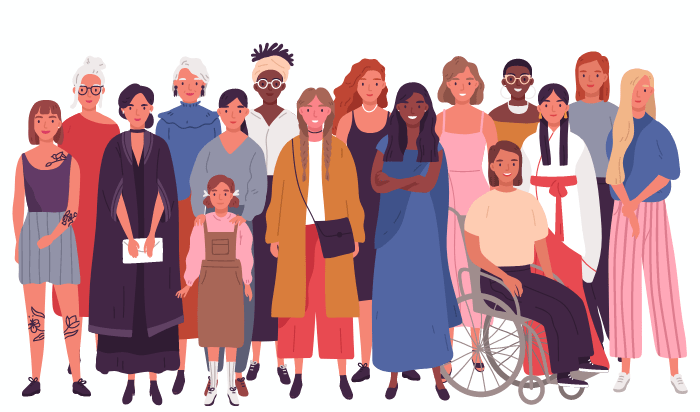
Members of University of Massachusetts Global’s faculty and staff spend countless hours helping students get closer to graduation, often finding this work satisfying and rewarding. Yet many among our ranks are also taking bold actions outside of work to make their neighborhoods and broader communities better places. With an eye toward sharing model stories on how colleagues can create a gentle balance between being a change agent while at work and at home, the Office of Equity and Inclusion (OEI) has launched the Advocating for Equity project.
“Throughout the year, we have the privilege of connecting, collaborating and supporting our team members from across the university,” said Jalin B. Johnson, vice chancellor of equity and inclusion. “The many conversations we have, and the efforts we partner on, serve as community centered reminders for the OEI team. Taking the time – year-round – to honor, remember, build, create supportive spaces, and listen is imperative to advocating for equity. This is a key part of how we interact with others, build our own personal awareness, and continue the process of both learning and unlearning, in addition to making space for wellness and healing.”
OEI is strongly encouraging submissions from faculty, staff, and students who would like to share their experiences. Stories that could be shared under the Advocating for Equity banner include accounts of personal service with organizations promoting social justice, organizations helping people who live with disabilities, resource and cultural centers, or faith-based or non-denominational groups. OEI is also interested in accounts of community happenings in which “extending equitable advocacy, support and resources for others, is the focal point.”
You can find the OEI online portal here. For more information, please contact the Office via OEI@umassglobal.edu.
We look forward to learning more about how our faculty and staff are changing their communities for the better.
Recognizing the importance of diversity and inclusion in higher education
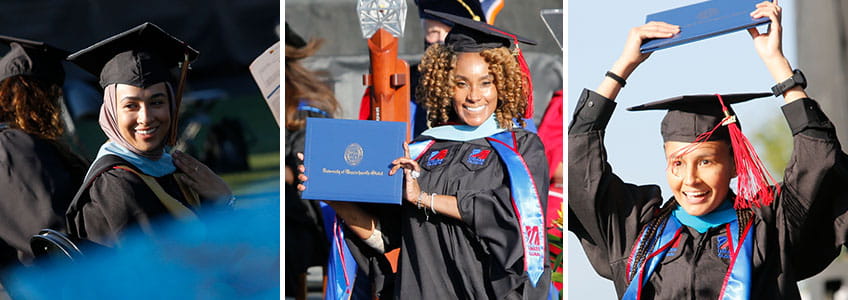
The desire to learn and grow one’s own understanding of the world and its wonders is an innately human urge. All people should have the chance to attend a supportive and welcoming school. Yet throughout its history, the American school system has failed to provide this opportunity to students from marginalized communities.
Recently, the importance of diversity and inclusion (D&I) in all spaces — including higher education — has been pushed to the forefront of the national consciousness. Institutions and organizations of all kinds have started new D&I initiatives and/or doubled down on existing efforts.
To better understand this critical work and why it is an essential part of a college education, we spoke with Hugo Yepez, director of strategic plan evaluation and assessment, and Dr. Jalin B. Johnson, vice chancellor of equity and inclusion, chief diversity officer and professor. Yepez and Dr. Johnson serve students through their work in the Office of Equity and Inclusion (OEI) at University of Massachusetts Global.
Inclusivity in Social Work
| September 13, 2022 Inclusivity in Social Work  |
| Recognizing an imperative to better prepare students for service in a multicultural and diverse nation, UMass Global social work faculty have spent two years engaging with the university’s Office of Equity and Inclusion to improve practices within their department. Professors and staff who have devoted their time to adding JEDI (Justice, Equity, Diversity, and Inclusion) concepts to the learning experience will soon discuss their work at the annual meeting of the Council on Social Work Education. The convention, themed “Leading Critical Conversations: Human Rights are Global Rights,” is scheduled for Nov. 10 through 13 in Anaheim and will provide a venue for social work faculty and OEI staff to share the steps they have taken to enhance inclusivity within the Department of Social Work. These actions include updating student materials and a series of faculty retreats focused on discussions of antiracism. “I’m always excited when we can see the efforts coming to fruition in settings outside the university … it’s good to see not only the work we’ve done in our university but also how it can impact other universities,” said Hugo Yepez, director of OEI strategic plan evaluation and assessment. Faculty members Jeannine Meza, assistant professor of social work; Amber J. Ramirez, associate professor of social work, and Justine Rangel, assistant professor of social work, plan to lead a panel discussion during the November gathering. Yepez is also scheduled to join the presenters and Dr. Jalin B. Johnson, vice chancellor of equity and inclusion, and OEI staffer Jenny Park, equity and inclusion specialist, are set to participate by helping to respond to audience questions. Meza, one of the faculty members involved in this effort, pointed to research showing U.S. social work students often graduate without obtaining sufficient knowledge of how to serve diverse clients. This realization inspired faculty members to enhance antiracist components of social work programs, discussing such resources, such as Ibram X. Kendi’s “How to be an Antiracist.” “Through these conversations, we developed a better understanding of one another as faculty and staff,” Meza said. “We created a pool of resources to utilize for curriculum revisions to be an antiracist and antioppressive social work program. This will be our area of focus for 2022-23.” The Council on Social Work Education’s anti-racism principles, as outlined in the body’s 2022 Educational and Accreditation Standards, are also informing the process of updating social work programs. The Department of Social Work’s own Diversity, Equity, and Inclusion Committee formed prior to the 2020 creation of OEI, Johnson said. Social work faculty have since worked closely with OEI to update their department’s programs and practices. This collaboration has resulted in updates to student handbooks and manuals involving such additions as gender-neutral language and anti-discrimination statements, as well as care to ensure that other materials referred to in the documents are accessible. OEI staffers are now engaged in similar work with additional academic departments and will be responsive to requests from others seeking to align their operations with best practices in diversity, equity, and inclusion. “We always go where we’re invited, which is a wonderful thing,” Johnson said. |
OEI J.E.D.I. Day (Inaugural)
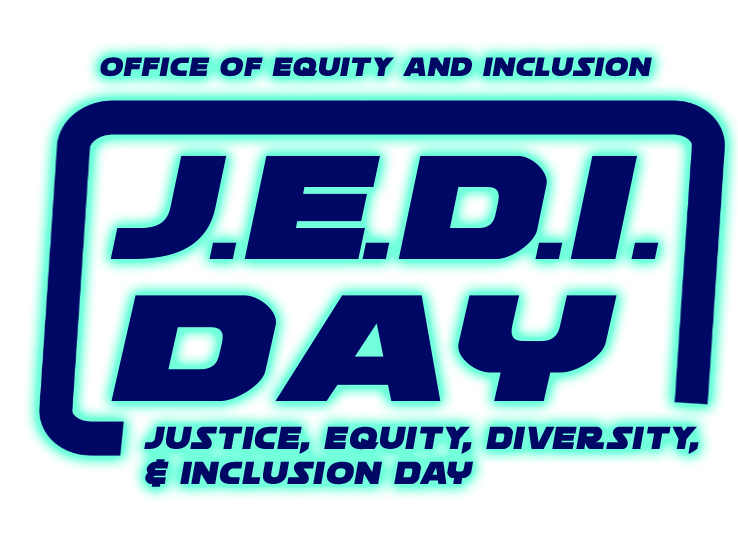
In December of 2020 – when first taking on the role of Vice Chancellor of Equity and Inclusion/Diversity Officer – the vision that was “OEI J.E.D.I Day” was but a seed.
A hope for our community to come together and engage with one another surrounding discussions focused on justice, #equity, diversity and inclusion, held the promise of transformational change.
This MayThe4th – that vision of hope became a reality.
It took collaboration, partnership, trust, altruism and advocacy.
It was but for the tireless efforts of Hugo Yepez, M.Ed. and the unwavering support from Jenny Min Jung Park that this vision of hope was realized.
It is due to the time, passion, commitment, diversity of thought, and trust given by so many students, alumni, staff, faculty and administrators in our community, that the world’s first ever OEI J.E.D.I. Day was realized.
I am humbled.
I am thankful.
I am hopeful.
Driving Institutional Change: Building Upon the Invisible Labor and Lived Experiences of Black, Minoritized, and Underrepresented Employees
Association of American Colleges and Universities conference
Presentation: Driving Institutional Change: Building Upon the Invisible Labor and Lived Experiences of Black, Minoritized, and Underrepresented Employees
We appreciated the opportunity to connect and engage with so very many members of the academy. Thank you to my fellow presenters and colleagues Dr. Nakisha Castillo and Dr. Hawani Negussie

Driving Institutional Change: Building Upon the Invisible Labor and Lived Experiences of Black, Minoritized, and Underrepresented Employees
Association of American Colleges and Universities
“Driving Institutional Change: Building Upon the Invisible Labor and Lived Experiences of Black, Minoritized, and Underrepresented Employees”
Presenters: Dr. Jalin B. Johnson, Dr. Nakisha Castillo and Dr. Hawani Negussie
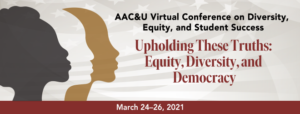
Abstract:
This session centers a review and discussion of the invisible labor and emotional currency drawn upon when building forums, keynote presentations, facilitated workshops, mentoring, volunteer efforts and organized talks surrounding justice, equity, diversity and inclusion (J.E.D.I.) The many intricacies involved with implementing grass roots efforts, imperative for shifting university culture, leading to the development of dedicated efforts in this area, are discussed.
Addressing Issues of Equity and Inclusion in Higher Education through Valuing Lived Experiences
Author(s): Jalin B. Johnson, Nakisha Castillo, Dustin Domingo, Leticia Rojas, Donald B. Scott
- Publisher: Common Ground Research Networks
- Collection: Common Ground Research Networks
- Series: Diversity in Organizations, Communities & Nations
- Journal Title: The International Journal of Diversity in Education
Keywords: Cultural Competence, Diversity, Equity, Experience Context and Perspective Framework, Inclusion, Institution of Higher Education (IHE), Lived Experiences, Impostor Phenomenon, Inclusive Classroom, Narratives, Students
Abstract
Through the lens of the Experience, Context, and Perspective framework, addressing the Cultural Competence Continuum and Impostor Phenomenon, this article discusses ways to better connect with and serve students within institutions of higher education. The authors examine the impact of lived experiences in the classroom, workspace, and personal life, including acknowledging barriers and feelings of inadequacy, in an effort to develop competency, as educators, working with diverse students. The concluding discussion addresses implications to help faculty, administration, staff, and students understand the power of overcoming their own internal and external challenges in order to empower them to strengthen their authentic voice.
- Volume: 21 Issue: 2 Year: 2021
- ISSN: 2327-0020 (Print)
- ISSN: 2327-2163 (Online)
- DOI: https://doi.org/10.18848/2327-0020/CGP/v21i02/79-91
Citation: Johnson, Jalin B. , Nakisha Castillo, Dustin Domingo, Leticia Rojas, and Donald B. Scott. 2021. “Addressing Issues of Equity and Inclusion in Higher Education through Valuing Lived Experiences.” The International Journal of Diversity in Education 21 (2): 79-91. doi:10.18848/2327-0020/CGP/v21i02/79-91.
Extent: 13 pages

Association of California School Administrators (ACSA) BU Wednesday Webinar Series
 Thank you Association of California School Administrators (ACSA) and Dr. Barbara E. Bartels for extending the invitation to share “Connecting with our students, hearing their stories & cherishing their narratives” – applying the ECP framework and Cultural Competence Continuum as part of the ACSA/BU Wednesday Webinar Series.
Thank you Association of California School Administrators (ACSA) and Dr. Barbara E. Bartels for extending the invitation to share “Connecting with our students, hearing their stories & cherishing their narratives” – applying the ECP framework and Cultural Competence Continuum as part of the ACSA/BU Wednesday Webinar Series.
 It was a pleasure to participate, share research & insight and to examine our lived experiences alongside my colleagues Dr. Nakisha Castillo, Dr. Dustin Domingo, Dr. Leticia Rojas & Dr. Donald B. Scott.
It was a pleasure to participate, share research & insight and to examine our lived experiences alongside my colleagues Dr. Nakisha Castillo, Dr. Dustin Domingo, Dr. Leticia Rojas & Dr. Donald B. Scott.
Scientist, Human Computer & Trailblazer; Remembering the Legacy of Katherine Johnson
– by Dr. Jalin B. Johnson
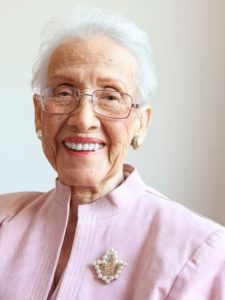
American mathematician Katherine Coleman Goble Johnson (August 1918 – February 2020), changed history as one of the first women to work at NASA as a scientist. Like many women (of her own and subsequent generations) in STEM fields, Johnson helped to create a space for many underrepresented and minoritized groups that succeeded her.
In the United States, representation within the fields of Science, Technology, Engineering and Mathematics (STEM) are monitored by groups including the National Girls Project (NGP), Catalyst and others.
When examining the STEM workforce, it has been noted that “women remain underrepresented in the science and engineering workforce, although to a lesser degree than in the past, with the greatest disparities occurring in engineering, computer science, and the physical sciences (NSF, Science & Engineering Indicators, 2018). Additionally, according to NGP, women make up half of the total U.S. college-educated workforce, but only 28% of the science and engineering workforce. Likewise, female scientists and engineers are concentrated in different occupations than are men… (National Girls Collaborative Project, 2020).
While ‘Looking at Leadership,’ I spoke with Dr. Cherilynne Hollowell, Natalie V. Nagthall & Andrea M. Stoll. Each of these women are helping to educate our future trailblazers. Here, they celebrate their own connection to the work of Johnson and other STEM pioneers.
 And they told us “Black Girls don’t do Math”
And they told us “Black Girls don’t do Math”
At a time in American history when African American women stood at the intersection of two prevailing and predominant systems of oppression, namely race and gender, Katherine Johnson epitomized the significant reality that Black girls not only do math, they also do physics and they code. According to Black Girls Do Stem, the number one indicator for a girl to be interested in science is having a role model who is/was a female scientist. As jobs of the future and a continuous movement toward a global economy require an increasingly high demand for persons with knowledge in STEM fields, the reality is that there are not enough Black girls enrolled in higher level math or science courses at the high school and postsecondary levels to fill those positions often because they lack role models and exposure (The National Assessment of Educational Progress (NAEP), 2017).
The release of the motion picture Hidden Figures (2016,) gave Black girls everywhere, superheroes that look like them, thus changing the trajectory of education and the mindset for young girls of color that may have felt anxious or inadequate in their efforts to succeed in mathematics and science. In addressing the challenge that Black girls face in pursuing careers in STEM fields, it is critical to present a historical counter-narrative that countless WOC, specifically Black women, have received advanced degrees in mathematics from prestigious universities and have published in peer reviewed journals, along with working in these fields. Women including Dr. Sadie Gasaway, Dr. Lillian K. Bradley, Dr. Genevieve Knight, Dr. Gloria Gilmer, Dr. Kate Okikiolu, Dr. Evelyn Boyd Granville, and Dr. Marjorie Lee Browne, have done so against insurmountable odds. The requisite empowerment for young girls and teenagers of color that will change the narrative which suggests that “Black girls don’t do math” lies in allowing them to see themselves in schools in the form of Black female math and science teachers and in presenting and providing opportunities for them to be exposed to and to “do” STEM. As an educator dedicated to encouraging students to reach for the stars, literally and figuratively, I look forward to the development and exposure of present-day “not-so hidden” figures.
 A Diversified STEM Workforce will Yield to Adequate Representation
A Diversified STEM Workforce will Yield to Adequate Representation
On the heels of Black History Month, the world of STEM lost a giant in the field. Ms. Katherine Goble Johnson was a pioneer in this arena as were many in our nation’s history. The contributions of women especially women of color (WOC) in STEM are multitudinous with pioneers such as Dr. Glady West whose work in mathematics paved the way to the invention of the Global Positioning System (GPS). Likewise, Dr. Shirley Jackson who developed the technology that led to the creation of caller ID and call waiting, and Dr. Patricia Bath, inventor of a laser cataract treatment device known as a Laserphaco Probe, led with innovation. While the contributions of WOC’s have left an indelible mark on our society, there is a growing concern that these contributions will be halted due to lack of representation.
Even though there has been an increased focus in diversifying the STEM workforce, there still remains a dearth of adequate representation, especially by WOC. In order for our society to be able to compete on a global level, it is important to make the necessary investments in building and diversifying the STEM capacity pipeline. This cannot be overlooked as our contributions in this area can only mean great things for how we are able to compete as a country thereby ensuring our economic growth. If our nation is not cultivating a diversified STEM workforce, this will inevitably lead to huge untapped talent pool. To stimulate this growth, it is also important for young WOC who are considering pursuing STEM as their profession, see representation of themselves so that they can feel a sense of belonging and confident in their abilities to be successful. Historically, there have been numerous contributions by WOC in STEM and it is the hope that our nation will continue on this trajectory for years to come.
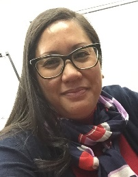 Always Focus on the Passion that Drives Us
Always Focus on the Passion that Drives Us
“We will always have STEM with us. Some things will drop out of the public eye and will go away, but there will always be science, engineering and technology. And there will always, always be mathematics. Everything is physics and math.” Katherine Johnson
While Kathrine Johnson’s life achievements highlighted and eventually, promoted the necessity of STEM, she made a truthful, yet simplistic statement needed for all, “everything is physics and math.” Many articles chronicling her life relay one important factor of her life’s success: her passion for mathematics. History has chronicled many barriers to entry into the accounting & finance professions. These challenges called upon women of color (WOC) like Johnson, to stand strong and work harder than their male counterparts. In 1943, Mary T. Washington became the first African American women to obtain her CPA license, while starting her own accounting firm, from her basement. There, she founded Washington, Pittman & McKeever (1968), which remains one of the largest, African American owned CPA firms to this day.
Women like Johnson and Washington remind us, in STEM careers and across professions, that we should always focus on the “passion” that drives us. By only focusing on the challenges and obstacles we face, we may miss the importance of these accomplishments. Johnson focused on being the best, asking the tough questions, taking her tasks beyond the assignment and making herself audible, during a time when the voices of women (and particularly WOC), were not always heard. The obstacles that women face, will always be present; but if we focus, with intent and passion, we will emulate and replicate the life and legacy of women like Johnson. This passion will continue to be my driving force, encouraging me to be the best I can be.
Impostor Syndrome; How Women Transform self-doubt to Claim Success (AAUW Webinar)
“Relieved and horrified at the same time…”
“There’s this constant self-criticism and fear of failure…”
“It doesn’t mean I’m a failure if I crash and burn…”
These were just some of the candid and thoughtful comments shared during the BU AAUW sponsored “Impostor Syndrome; How Women Transform self-doubt to Claim Success” webinar.
Led by Dr. Donald B. Scott and moderated by Dr. Lata Murti, the 35+ attendees engaged with featured speakers Dr. Ellen Belluomini and Dr. Kimberly Greene. Paired with a facilitated Q&A session led by Dr. Murti, Dr. Laura Galloway and Dr. Jalin B. Johnson, participants shared their experiences and asked questions of the panelists.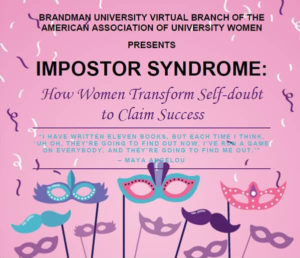
Drawing upon research conducted by Dr. Scott, based on the Impostor Syndrome construct developed by Dr. Pauline Clance and Dr. Suzanne Imes (1978), the group was able to achieve the following goals for the evening;
- Learn more about Impostor Syndrome and its effect on women
- Share success stories about women overcoming self-doubt and feelings of intellectual fraud
- Receive and provide suggestions for learning how to cope with Impostor characteristics
- Learn more about and exchange valuable resources
- Normalize the experiences and feelings of an Impostor
The Impostor Syndrome: A construct that describes highly successful individuals who experience feelings of fraudulence, a fear of being exposed, and the inability to internalize actual success.
Three primary characteristics include an individual’s feelings of fear of evaluation, fear of not being able to repeat his or her success, and fear of being less capable than others.
Looking at Leadership: Kobe Bryant, Mentorship and Legacy
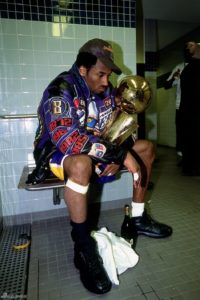 As parents (and as mentors to others) we can often find teachable moments appearing when we least expect them.
As parents (and as mentors to others) we can often find teachable moments appearing when we least expect them.
On Sunday, January 26, 2020, I experienced one of these teachable moments during a somber time that as a sports fan and parent to a young athlete, I had not anticipated.
Like many, after the news of NBA great Kobe Bryant (41) and his young daughter Gianna (13), hit the airwaves, I found myself searching through the websites of sports and cable news outlets for confirmation and information. And like so many around the world, I was heart-broken to learn that the reports of their passing in a fatal helicopter crash, along with others whose loved ones are now mourning their tragic loss, was indeed true.
During my internet search, I was immediately struck by Bryant’s last Twitter post (1.25.20), acknowledging NBA living legend LeBron James.
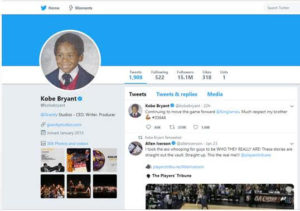
On Saturday, James became the third highest scorer in NBA history with 33,655 points, behind only Kareem Abdul-Jabbar and Karl Malone. Bryant’s tally sits at 33,643 points and with a running lay-up in the third quarter against the Philadelphia 76ers on Saturday, James moved past that figure (Calum Trenaman-CNN).
It was in that final Tweet from Bryant, acknowledging this historic moment and passing of the baton to James, that I began looking at leadership, while talking with our young athlete and scholar.
I shared during this solemn moment, how the now final Tweet and public expression from the NBA phenomenon, exemplifies how each of us can mentor and lead by example as we encourage others to continue our legacy.
In a few short words, Bryant acknowledged the greatness of another.
He applauded the passing of the baton and the continuing of his legacy, as all mentors should strive to do.
He offered young athletes around the world yet another example of how to lead from the sidelines with positivity, selflessness and with grace.
During the coming days and weeks ahead, parents, coaches and mentors to young people will have similar conversations. My hope is that they too, will encourage others to start Looking at Leadership and consider how they can be the example of mentorship; passing the torch and continuing the legacy.
Raising Children of Color Amid Conversations About Police Involved Shootings, Implicit Bias & Self-Efficacy
By Dr. Jalin B. Johnson
National Center for Institutional Diversity – Spark series
As a mother raising a Black man in the United States, I frequently have discussions with our son about safety during police interactions, situational awareness, perceived behaviors, and implicit bias. While these conversations are meant to keep him aware of the reality he will face in life as a person of color, I strive to also encourage his self-efficacy, (confidence in the ability to have control over our own behaviors and social environment (Bandura, 1977), as he matures.
Like other parents to children of color, I know the emotional tax and ongoing concern from having conversations with our children that are intended to prepare them for a world that will judge them prematurely, and diminish the confidence they need to succeed as adults.
Critical Race Parenting says “parenting happens amidst contemporary societal contexts rife with unpunished police violence against Black and Brown youth, all occurring amidst contentions that we now live in a post-racial U.S. society” (Bonilla-Silva, 2006; Carter-Andrews & Truitt, 2013). The conversations we have with our son, about police involved shootings, implicit bias & self-efficacy, mirror what Critical Race Parenting outlines. Our discussions provide an example of how “communities of color have long recognized the need for instilling in our children a critical understanding of institutional racism, as well as the strategies and identities essential to collective and individual health, safety, and endurance” (DePouw & Matias, 2016).
When we talk with our son, we touch on the statistics of police-involved shootings. To date, the Washington Post has documented over 780 people shot and killed by police this year, with a majority (530), identified as Black, Hispanic, and otherwise non-white. The New York Civil Liberties Union (NYCLU) reported that “between 2014 and 2017, young Black and Latino males between 14 and 24 years-old account for only five percent of the city’s population, compared with 38 percent of reported stops. Young Black and Latino men were innocent 80 percent of the time.”
To add, the NYCLU found that the New York Police Department used force on over 21,000 Black and Latino people and over 2,200 white people. Subsequently, even among those stopped, Black and Latino people were more likely to have force used against them than white people (NYCLU, 2014). The American Civil Liberties Union Illinois 2015 Stop and Frisk report states: “[The stop and frisk] procedure is often invasive, humiliating and disturbing.” The deaths of Black and Latino men and women at the hands of police officers demonstrate that this and similar encounters with law enforcement, have proven to be more than “invasive, humiliating and disturbing,” they are too often, fatal.
Being aware of the statistics that document these realties also requires parents to pay attention to media reporting that covers police involved shootings. When Philando Castile and Walter Scott were killed by police during traffic stops, our discussion with our son about how to behave as a driver or passenger of a car in these situations intensified. Similarly, when Atatiana Jefferson and Botham Jean were murdered in their own homes by police officers in Texas, we revisited discussions about implicit bias, which describes how unconscious actions and decisions are influenced by stereotypes and attitudes.

I learned not long ago that our son is beginning to better understand this reality. He shared an experience he had at the home of family friends. During a conversation with the friend’s father, a law enforcement officer, like most of the other guests in attendance, he told our son he considered him to be a positive influence on his own son and their friends.
During this interaction, our son was mindful of fatal encounters between Black men and women and police officers in this country and our many conversations about being respectful towards his elders, while maintaining his behavior, in a way he thought was ‘right.’
Although emotionally taxing, as parents raising children of color, it is critical that we continue to have conversations with our children that prepare them for a world that will judge them prematurely. We must have these imperative discussions while still encouraging their confidence as they mature to become the people they wish to be.
Courageous Conversations: Creating a Safe Space for Dialogue on Race, Gender and Ethnicity
December 11, 2019

Moderated by Dr. Carlos V. Guzman, panelists Dr. Jalin B. Johnson, Dr. Dustin Domingo, Dr. Ellen Belloumini and Dr. Julianne Zvalo-Martyn participated in the BU virtual branch of AAUW hosted session “Courageous Conversations: Creating a Safe Space for Dialogue on Race, Gender and Ethnicity.”
Dr. Guzman led participants in gauging “one’s understanding of biases, values, beliefs and attitudes about cultural diversity.”
Additionally, participants were able to “gain skills in terms of strategies for encouraging courageous conversations around cultural diversity.” This included discussion on gender, microagressions, ethnicity and self-awareness.
Panelists addressed important questions (along with participant Q&A) in the following areas;
- How the current political/social environments impact the work done with our students.
- Issues observed when working with students relating to race, gender and ethnicity.
- Our role as educators, relating to these issues.
- Strategies used to create an environment for courageous conversations among students.
The session was facilitated by BU AAUW 2019-2021 branch President, Dr. Lata Murti.
Equity and Intersectionality: Considering Student Identities and Experiences
Being invited to kick-off the Faculty Series coordinated by the Academic Advising Professional Development Committee, was truly an honor. I was proud to be joined this week by my esteemed colleague, Dr. Lata Murti, as we presented “Equity and Intersectionality: Considering Student Identities and Experiences,” at the inaugural Faculty Series event.
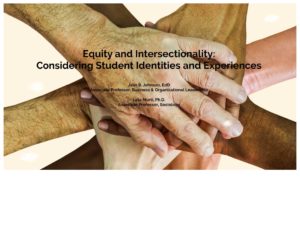
This follow up to the June 2019 Advising Summit (collaborative Keynote session) ‘Experience, Context and Perspective; Connecting with our students, hearing their stories & cherishing the narrative,’ was yet another effort by our pioneering Academic Advising team, to continue important discussions surrounding Diversity, Equity, Inclusion and Social Justice. Thank you all again for the gracious invitation and for all that you do for our community and to support our students & peers within the academy.
*A special thank you Courtney Crosta, Taylor Vartanian, Patricia Popovich, Dr. Donald B. Scott and Dr. Lata Murti for your scholarship and partnership.
Leadership & Mentoring – Tailored Workshops

- ‘From Mentee to Mentor: Using CRM Solutions and Our Diverse Campus Community to Build a Successful Mentorship Pipeline Technology’
- ‘Forum on Diversity and Inclusiveness’
- ‘Leadership’ & Membership; Not-for-profit organization engagement’
- ‘Engaging and Motivating Diverse Students across Multiple Learning Platforms’
- ‘Innovative Pathways to Military Student Success’
- ‘Competency Based Education: A degree alternative that values the knowledge, skills and abilities of veterans’
- ‘Equity and Intersectionality: Considering Student Identities and Experiences’
Inland Ivy Foundation hosts Dr. Dorothy Buckhanan Wilson for ‘You Can Lead’ Book Tour event
The Inland Ivy Foundation hosts Dr. Dorothy Buckhanan Wilson, author of You Can Lead.
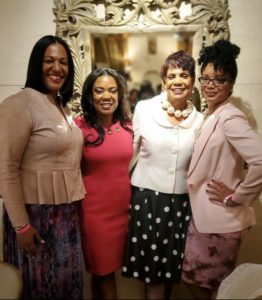 Wilson’s ‘You Can Lead‘ book signing event was held at the historic Mission Inn (Riverside, CA). Dr. Jalin was pleased to join noted scholars, community advocates & organizers, educators from k-12 and higher ed, in addition to local entrepreneurs and representatives from the private and non-profit arenas, also in attendance.
Wilson’s ‘You Can Lead‘ book signing event was held at the historic Mission Inn (Riverside, CA). Dr. Jalin was pleased to join noted scholars, community advocates & organizers, educators from k-12 and higher ed, in addition to local entrepreneurs and representatives from the private and non-profit arenas, also in attendance.
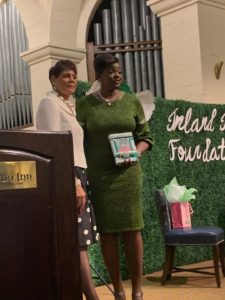 Dr. Wilson (pictured here with Mrs. Linda Gaines-Brooks), addressed her book, ‘You Can Lead,’ via her ‘compelling storytelling & practical tips to walk the reader through 30 valuable leadership lessons gained during her 30 plus years of corporate, non-profit and civic experience.’
Dr. Wilson (pictured here with Mrs. Linda Gaines-Brooks), addressed her book, ‘You Can Lead,’ via her ‘compelling storytelling & practical tips to walk the reader through 30 valuable leadership lessons gained during her 30 plus years of corporate, non-profit and civic experience.’
The event closed with an engaging Q&A session moderated by author, Stephanie Walton.
The event was co-sponsored by members of Alpha Kappa Alpha Sorority Inc., Southern CA Cluster Chapters, The San Bernardino Valley Chapter of The Links, Incorporated, Top Ladies of Distinction Incorporated,The Pressley (Moore) family, Streeter Realty, Gerri Foxall-Kater, Phyllis Chavis, Tillman Riverside Mortuary and other community sponsors.
What is organizational leadership? Breaking down the basics
What is organizational leadership? Breaking down the basics
June, 05, 2019
You have your sights set on climbing the ladder to play a more integral role in your company. But how do you proceed? It’s possible that an organizational leadership degree could be exactly what you need to hone your leadership skills, helping you learn how to be effective in implementing organizational change, promoting teamwork and empowering your team to achieve success.
What is organizational leadership, exactly? Dr. Jalin B. Johnson, associate professor of business and organizational leadership at Brandman University, offers clarification by explaining what relevant degree programs aim to do.
“Effective is the key word,” Dr. Johnson offers. In organizational leadership programs, she says, “we are offering students the opportunity to look at leadership holistically. They leave with something tangible that can make them a more effective leader.”
You may be wondering whether a degree in the field can help propel you to new levels in your career. Read on as we explore the ins and outs of organizational leadership, while outlining what to expect at both the bachelor’s and master’s levels.
What is organizational leadership, exactly?
Generally speaking, organizational leadership takes traditional leadership skills to the next level by incorporating key aspects of human psychology. The basic premise of organizational leadership is to employ a management strategy that simultaneously works toward what is best for individuals and what is best for the company as a whole. Dr. Gale Mazur, associate professor in the School of Business and Professional Studies at Brandman University, recalls a former student explaining this idea perfectly.
“She said she came into the program as a good manager, but she was leaving the program as a very effective leader,” Dr. Mazur recounts. The student was already a good supervisor who ensured tasks were completed, but she left the program understanding how to provide vision that helped employees feel more engaged.
Dr. Mazur explains that the ability to align people with the goals of the organization can be paramount in motivating and inspiring employees to bring that vision to fruition. In essence, impactful leaders must set the tone and direction of the company while working toward achieving organizational goals.
In their commonly cited paper, “The Nature of Organizational Leadership,” researchers Stephen J. Zaccaro and Richard J. Klimoski suggest the success of the collective whole is a major criterion for effective leadership. Every organization is comprised of individual parts that assist one another to work together as a system. The tenets of organizational leadership call upon leaders to learn how to capitalize on the strengths of individuals, manage around any weaknesses and use this focused management approach to accomplish what is best for everyone.
Zaccaro and Klimoski pose the idea that great organizational leaders impact the routine activities of their companies, and also know how to use their leadership skills in response to or in anticipation of non-routine events. This means effective leaders gain such an in-depth understanding of their organization and its employees that they can manage change within the system without disrupting it.
What are your organizational leadership program options?
If you’re looking to advance your business and leadership skills, you might be wondering what type of program you should be looking for. Dr. Mazur suggests considering what it is you’re looking to gain from a degree.
“If you’re looking for the basic skills to get a job in the business world, you’d probably be better suited for a bachelor’s in business administration,” she says. “But if you’ve found your niche and want to gain the additional skills you need to move ahead as a leader, you might consider an organizational leadership program.”
Dr. Mazur further explains that people are often hired for their technical skills, but later transition to management or leadership roles where the capacity to work well with people becomes more important. Organizational leadership programs help professionals hone those impactful people skills that can help them make the jump from individual contributor to effective leader.
What to expect from a bachelor’s in organizational leadership
Simply put, the undergraduate route would be right for you if you’re interested in organizational leadership but have not yet earned a bachelor’s degree. That’s true even if you have work experience.
“I find more often than not that undergraduate organizational leadership students are people who have been in their field or industry for some time,” Dr. Johnson says, “and they have come to the point where they need to enhance their qualifications to advance.” She explains that these professionals are often told by their company they’ll need to earn a bachelor’s degree to move ahead.
At Brandman University in particular, professionals from just about any field who are seeking a bachelor’s degree can benefit from the Bachelor of Arts in Organizational Leadership program.
“That’s part of the benefit of Brandman’s organizational leadership programs,” Dr. Johnson divulges. “We are not industry-specific. We have different backgrounds. Across the board, we’re looking at how organizational leadership tools can be applied no matter your industry.”
At the baccalaureate level, Brandman University offers professionals a comprehensive curriculum that includes marketing, human resources, economics, organizational behavior, ethics, team building, finance, accounting and leadership.
With emphasis options like supply chain systems and organizational administration, the vast course offerings include the following:
- Organizational Behavior
- Leadership and Professional Ethics
- Leadership in Diverse and Multicultural Organizations
- Research and Analytical Thinking
- Organizational Development and Change
- Theory and Practice of Leadership
Students who would prefer an online, self-paced program may find what they’re looking for in Brandman’s competency-based BBA in Management and Organizational Leadership program.
What to expect from a master’s in organizational leadership
When it comes to graduate-level programs, Dr. Mazur explains it’s common to see students who have several years of work experience and are now ready to take on additional leadership responsibilities. Some are even excited to take on executive roles.
“It’s not unusual to have students talk about being promoted midway through their program,” Dr. Mazur adds. “It’s because our program emphasizes putting what they’re learning into practice. It really does give them a competitive edge.”
Brandman University’s Master of Arts in Organizational Leadership program is great for professionals who want to explore leadership styles and strengthen their ability to focus on individual growth that leads to company success. It includes emphasis options ranging from business administration to human resources.
At the graduate level, you can expect some of the following course options:
- Organizational Research
- Democracy, Ethics and Leadership
- Self, Systems and Leadership
- Leading Organizational Change
- Organizational Dynamics
- Leadership and Team Development
The master’s program at Brandman University also enables military service members and veterans to apply their military experience toward their degree. In fact, those ranked E7 or above can earn their Master of Arts in Organizational Leadership in as few as seven classes.
Is an organizational leadership degree right for you?
As you analyze the possible ways you can move your career and your company forward, it’s clear you don’t need to wonder, “What is organizational leadership?” Perhaps you’re starting to see that a degree in this field can equip you with the skills you’ll need to achieve success. By learning how to meet challenges and accomplish goals — put forth both by individual employees and also by the organization as a whole — you can establish yourself as an impactful presence in just about any industry.
Looking at Leadereship: Father’s Day Edition
By Dr. Jalin B. Johnson

“When you’re young, you think your dad is Superman. Then you grow up, and you realize he’s just a regular guy who wears a cape.” -Author unknown
Having always been thankful for the love of parents who taught my brother and I an array of life lessons, I am blessed to have also seen them model excellence. This Father’s Day, I considered all of the many leadership lessons my father has offered us through his own wisdom and insight. My Pops wears his cape well. Recently, I set aside my own bias and asked some of our Brandman faculty and leaders – who also happen to be dads and grandads – about the leadership examples and wisdom they have both shared and received through the years.
Honoring the 75th anniversary of D-Day; How Fathers Inspire Thoughts of Love & Leadership – Dr. Sam Bresler, Associate Dean of Student and Faculty Affairs/ Professor of Human Resources and Business Administration
My father participated in D-Day, and in the months of struggle that followed that day. He served in the Army Air Corps as a flight surgeon, reaching the rank of Lieutenant Colonel. The decisions that he was required to make were challenging and at times heartrending. In addition to attending to the needs of those who were injured in combat, he was called upon to decide who would qualify for flight status and who would remain behind (until the next mission).
As I reached that point in my life where I was contending with the demands of my own military service, he often reminded me that modeling the behavior that you most wanted to see in others was the first requirement of leadership. I never forgot those words, or his continued commitment to them, and have attempted to follow his example in the years that I’ve been privileged to lead and influence others.
The Importance of Fatherhood – Dr. Alan Enomoto, Associate Dean of Multiple subject, Single subject, MAT programs, BA Early Childhood Education and BA Liberal Studies with Credential Programs/ Associate Professor
Amongst other things, I’ve encouraged fathers to become active in their children’s education and make it a point to consistently attend and actively participate in their child’s school activities and events. Through this behavior, fathers are sending a vital, unspoken message to their children that schooling is extremely important and is aligned to their family’s values. This is not always easy to do. In seemingly endless demands placed upon us in today’s society, it is often difficult to juggle the responsibilities of work, home, and education. However, it cannot be discounted how a father’s active involvement in school makes a tremendous difference in how children view education and the success they are able to achieve in school.
Living our Lives with Integrity – David Long, J.D., Associate Professor of Criminal Justice and Legal Studies
Interestingly enough, I only truly became a father after I was divorced. Still, I made every effort to involve myself in their lives in those early stages. No matter how “bumbling” that initial involvement was, it was important. At 35, a divorce thrust me squarely into the role of being a father. My relationship with my children was no longer filtered through the relationship dynamics of being a husband and a father. Suddenly, it was my son, my daughter, and me. Over the past 20 years, I have noticed that leadership and success as a father to me has meant being available to my children as a sounding board. I listen to them without immediate judgment. We might not realize it at the time, but they value our ideas, as long as the feedback we give them comes from a place of love and caring. I have learned that we can lead our children through truly listening to them, asking questions, making time for them and living our own lives with integrity.
A Father’s Wisdom and Leadership – Carlos V. Guzman, Ph.D., Assistant Professor, School of Education
My father played an important role in shaping me. He brought courage, safety, optimism and wisdom. I developed key leadership characteristics from my father. I learned to be confident no matter what the circumstances and to always speak up when a situation called for it. My father believed in never judging others and emphasized that respect was crucial and part of the Golden Rule. I was taught to always be a team player and contribute to the greater good. My father was a well-educated man but never flaunted it. He once said, “Even though you may have the most knowledge in the room, it is better to sit back and listen, you never know what more you can learn.”
Fatherhood as a Sociocultural Construct – Dr. Isa A Ribadu, Associate Dean of Psychology/ Assistant Professor of Psychology
It embodies multiple definitions and nuances that can cripple the understanding of it, or hide the simple elegance of the role. The practical elements of fatherhood require a father to be present. It asks a father to be who they are as they provide consistent guidance, nurturance, support, wisdom, love, and loyalty to a child; all while remaining present as a child triumphs, offering words of praise, showing love in its unconditional form. Fathers must willingly sacrifice themselves to enrich the life of a child. To have a father who understands this concept in its simplest form is to have a father who understands the value of life.
Sometimes the best guidance can happen without words – Glenn Worthington, Ed.D., Dean of the School of Business and Professional Studies, Professor of Organizational Leadership
Observing my father while I was growing up taught me about the value of family, education, service and work. He never had to say anything special to me to convey what was important. I just watched the things he did and the way he did them and learned from his actions. I wish everyone could have such a great role model. The world would be a better place.
This Father’s Day as you’re Looking at Leadership and considering how to reach out to a special father or grandfather you appreciate, I leave you with this closing thought:
“I am a princess, not because I have a prince, but because my father is a king.” –Author unknown
Happy Father’s Day!
 Jalin B. Johnson, Ed.D., is an associate professor in the School of Business and Professional Studies at Brandman University, focusing on business and organizational leadership. She is a regular contributor on issues of leadership and current events.
Jalin B. Johnson, Ed.D., is an associate professor in the School of Business and Professional Studies at Brandman University, focusing on business and organizational leadership. She is a regular contributor on issues of leadership and current events.
How Our Course Developer Certification Program Transformed Faculty, Their Perception of Diversity Cognizant Curriculum and Their Efforts in Course Development
An Investment in Innovation Is an Investment in People: How Our Course Developer Certification Program Transformed Faculty, Their Perception of Diversity Cognizant Curriculum and Their Efforts in Course Development
April 2019
Eight members of Brandman’s faculty presented at the Western Association of Schools and Colleges’ (WASC) conference. The WASC accreditation process aids institutions in developing and maintaining high standards of quality and effectiveness in student learning, and the conference is where Brandman showcases its leadership in best practices. The following faculty members presented:
- Laurie Dodge, Ph.D., vice chancellor of institutional assessment and planning – Backward Design: The Secret Sauce to Building Relevant and Quality Programs
- Marnie Elam. Ph.D., associate professor of psychology – A Simple Formula for Great Assignments and Rubric
- Melanie Borrego, Ph.D., associate dean of undergraduate education and professor of english and Leigh Ann Wilson, Ph.D., associate professor of history and communications – Five Ideas for Creating Community with Online Adjunct Instructors
- Helen Eckmann, Ed.D., associate professor of business administration and Laura Galloway, Ph.D., assistant professor of organizational leadership – Women, Money, and Self-Care
- Jalin Johnson, Ed.D., associate professor of business and organizational leadership and J. Murphy, Ed.D., associate vice chancellor of instructional innovation – An Investment in Innovation Is an Investment in People: How Our Course Developer Certification Program Transformed Faculty, Their Perception of Diversity Cognizant Curriculum and Their Efforts in Course Development
 Jalin B. Johnson, Ed.D., associate professor of business and organizational leadership and J. Murphy, Ed.D., vice chancellor of instructional innovation presented as part of the WASC “Designing Professional Development: Faculty and Courses” moderated session. The presentation focused on Brandman’s Course Developer Certification (BCDC) program and Diversity Cognizant Curriculum.
Jalin B. Johnson, Ed.D., associate professor of business and organizational leadership and J. Murphy, Ed.D., vice chancellor of instructional innovation presented as part of the WASC “Designing Professional Development: Faculty and Courses” moderated session. The presentation focused on Brandman’s Course Developer Certification (BCDC) program and Diversity Cognizant Curriculum.
Operation Varsity Blues, accessibility and the tradition of placating privilege
Looking at leadership: Operation Varsity Blues, accessibility and the tradition of placating privilege
By Dr. Jalin B. Johnson

“Tradition has it that whenever a group of people has tasted the lovely fruits of wealth, security, and prestige, it begins to find it more comfortable to believe in the obvious lie and accept that it alone is entitled to privilege” —Steven Biko
Unfortunately, the reality of the recent college admissions scandal so dubbed Operation Varsity Blues by FBI officials on March 12 was not a surprise. It underlined a tradition of privilege that has purveyed the college admissions process, for generations; now highlighted by those charged for being involved in a conspiracy as a part of “the largest college admissions scam ever prosecuted by the Department of Justice.”
Through my own diversity cognizance, like many in the community of parents and educators of children with special needs, I was disheartened to learn of the bribery enlisted to help falsify the need for college entrance exam disability and accessibility accommodations.
Motivated by a lifelong pursuit to seek and support equitableness and leadership, driven by ethics and integrity, I asked for feedback from advocates whose lived experiences have compelled them to work towards an equality that has yet to be sustained.
To Fairly Compete – Dustin Domingo, Ed.D.
The Americans with Disabilities Act (ADA) was put forth to assure that individuals with disabilities “have the ability to fairly compete” for and pursue opportunities such as college and university admission. This is done by requiring test taking agencies to administer high stakes standardized exams in a manner which is accessible to students with disabilities. The operative phrase to keep in mind here is to fairly compete. Let us not forget that the playing field was uneven to begin with, giving advantages to individuals based on factors other than accessibility such as socioeconomic status, race, and language acquisition. In the US, education as an institution has had centuries to solidify systems that already give certain populations an upper hand. ADA exists to combat institutionalized barriers to education.
Educational attainment is the second greatest predictor of social mobility. Interestingly, this factor falls behind whether one is already born into wealth. The Varsity Blues scandal is so fascinating in the sense that the parents involved are already well-to-do folks with advantages across many variables that play into whether their child is able gain admission into a college or university through ethical means. It is gravely unfortunate for the Varsity Blues children, the students enrolled at these universities, and arguably more so for the students who were denied admission, that disability and accessibility accommodations were so heinously exploited.
Level the Playing Field – Lynn Larsen, Ph.D.
There is a broad assumption that for students with learning disabilities, or invisible handicaps, that they are unfairly awarded accommodations that provide them with an advantage over other students. In reality, students with learning disabilities need these accommodations in order to “level the playing field” so the learning and assessment environments are equalized.
A perfect example is my college-aged son. He is twice-exceptional, meaning that he is highly gifted as well as having learning disabilities. He has been diagnosed with Attention Deficit Hyperactivity Disorder (ADHD), which impacts his ability to focus, and severe dysgraphia, which impacts his ability to handwrite any work. Since he is verbally gifted, many teachers and professors wrongly assume that his accommodations give him an unfair advantage over his peers. In actuality, without his accommodations, he would not have been able to score high on the ACT, nor would he be successful in his college courses. Those using accommodations unlawfully only perpetuate the myth that students use them in inappropriate ways to gain an advantage.
Refrain from Stigmatization – Anne Spillane, Ph.D.
Individuals with Intellectual Disabilities (ID) have long faced adversity when accessing the accommodations needed in Institutions of Higher Learning (IHE). Offices of Disability Services on college campuses have led to improved access. Likewise, advances in technology have amplified accommodations made available to those with ID. As a result, we are seeing more people with ID able to access (and thrive within) these institutions.
The publicity given to the recent college admissions scandal has magnified the potential for stigma to return, for those utilizing accommodations in the IHE environment, particularly among educators. While ensuring the process for identifying those who qualify for accommodations is thorough, it will be important for those in leadership roles to refrain from making the process too difficult or stigmatizing those who truly need (and qualify for) accommodations. It is important that they reiterate that providing accommodations for those who genuinely need them is not only appropriate, but also a way of ensuring diversity on our campuses. This helps to create environments in higher education where all have the ability to succeed and reach our highest potential.
Operation Varsity Blues may indeed continue to uncover gaps in the admissions process. Rebecca Cokley, Director of the Disability Justice Initiative at the Center for American Progress, concisely reminds us that “the experiences of 57 million Americans with disabilities are not just costumes to wear to get pre-boarding access to a plane or extended time on a test.”
As you’re Looking at Leadership, know that there is power in recognizing the significance of each individual’s lived experiences, and advocating for inclusion and equity. This allows us to rebuke the tradition of placating privilege and to support sustainable equality.
 Jalin B. Johnson, Ed.D., is an associate professor in the School of Business and Professional Studies at Brandman University, focusing on business and organizational leadership. She is a regular contributor on issues of leadership and current events.
Jalin B. Johnson, Ed.D., is an associate professor in the School of Business and Professional Studies at Brandman University, focusing on business and organizational leadership. She is a regular contributor on issues of leadership and current events.
Looking at leadership: Operation Varsity Blues, accessibility and the tradition of placating privilege
From Academic Integrity to Creating Inclusive Classrooms; Faculty training continues important discussions
March 2019
Inland Empire and High Desert-based full-time and adjunct faculty came together for their annual Professional Development Day (PDD). This was the 11th PDD representing multiple campuses and an interdisciplinary team that included 35 attendees from full-time and adjunct faculty, campus directors and representatives from Riverside (Kristin Plapis, campus director), Menifee (Miguel Aranda, campus director), Victorville (Susanne Eisenhart, campus director) and Ontario (Patrick Pierson, campus director), and teacher supervisors.

The planning and facilitation team included Jalin Johnson, Ed.D., Nakisha Castillo, DMFT, Lynn Larsen, Ph.D., Leticia Rojas, Ed.D., and Nicole Schneider, Ed.D.

During this St. Patrick’s Day themed event, hosted by the BU Riverside campus, facilitators and speakers discussed an array of topics including:
- Systemwide updates and campus information via our area campus directors, Kristin Plapis and Miguel Aranda
- Technology tools and updates including Zoom and the new Brandman website, led by Nicole Schneider, Ed.D. and Lynn Larsen, Ph.D.
- An academic integrity session led by Brandman’s Governance and Appeals Committee members, Nakisha Castillo, DMFT and Lynn Larsen, Ph.D.
- An interactive workshop on creating more inclusive spaces in our classrooms led by Nakisha Castillo, DMFT and Leticia Rojas, Ed.D.

Looking at Leadership: An International Women’s Day salute
Looking at Leadership: An International Women’s Day salute
By Dr. Jalin B. Johnson

Brandman University-connected leaders share inspiration for International Women’s Day. (Top row, from left: Dr. Jalin Johnson, Dr. Tess Breen, Dr. Felicia Haecker. Bottom row, from left: Kristen M. Grimes, Dr. Kathryn R. Taylor, Dr. Tiffany D. Ware.)
When I was first asked to consider contributing my thoughts this March to coincide with International Women’s Day, “a global day celebrating the social, economic, cultural and political achievements of women,” I was reminded of some of the women whose journey I have been a part of as advocate, teacher, mentor and friend.
Representing a variety of backgrounds, areas of advocacy, and champions of those who serve, these Brandman alumna took a moment to share and recognize a woman that inspired them to achieve their goals and to be the change they wanted to see. These are their stories…
A Grandmother’s Legacy – Dr. Tess Breen
I am inspired by women who demonstrate their strength through self-sacrifice, determination, bravery, wisdom, and compassion. The most influential in my life is my very own grandmother, Charlotte DeRossett. Born in Tennessee during the Great Depression, her father was a kind and generous farmer who would set aside food each week to give to the poor. She recalls, “We were the poorest people we knew,” but her father instilled the importance of generosity from an early age.
Lesson #1: There is always someone who has it worse than we do. Be generous, always.
At the age of 15, she left home working two jobs to support her younger siblings. She always regretted not getting an education, but read every book she could get her hands on.
Lesson #2: Be a lifelong learner, hunger for knowledge, and be your own teacher.
My grandmother will never miss an opportunity to give a sincere compliment and tell you how special you are. She will be 90 this year, and attributes her health to the joy that comes from approaching life with gratitude and optimism.
Lesson #3: If you woke up today, be grateful. There is always something to be grateful for.
We celebrate Charlotte along with all the powerful female influencers who have opened the doors of possibility.
Fearless – Kristen M. Grimes
I am inspired by many women who have pushed the boundaries in fearless ways to create a world that doesn’t just accept what women have to offer, but appreciates it. One such woman that comes to the forefront is Kathrine Switzer. I often wonder if she knew the impact she would have, inspiring countless women in the pursuit of equality, the day she toed the line of the Boston Marathon in April 1967, a race that didn’t allow female participants at the time. Probably not, but she surely began to recognize the impact when the co-race director attempted to physically drag her out of the running. In that moment she stood strong and ran, most likely knowing that the world was watching and that if change was going to happen by crossing the finish line that day, she needed to find a way to keep going.
Following that race, Kathrine made it her mission to fight for equal rights for women in sports. She founded a non-profit organization, Fearless 261, with running clubs across the globe aiming to promote equality and female empowerment. Today, I am inspired by the countless women lining up for big and small races and I think of Kathrine. When I see Shalane Flanagan cross the NYC Marathon finish line with arms raised high and a cry of victory on her lips, I know she owes a debt to those who have run before her. In those moments, I know that I owe the same debt to these fearless warriors. I may not win a marathon, but I can teach my daughters and granddaughters that they are powerful in all they do; that together we can create a better future – arms raised high above our heads, a cry of victory on our lips, fearlessly moving forward across our own finish lines.
Finding my way – Dr. Felicia Haecker
As a female veteran living with PTSD, I can truly say I have been battle tested. I pride myself in being able to face difficult situations and see them through. After serving on active duty for 12 years, 6 months and 5 days, I decided to transition out of the Air Force. Imagine my surprise when the transition was much more difficult than I could have ever imagined. Here I am, a warrior, and I cannot will my civilian self to overcome my transition issues. I found myself in the grips of depression. What was I thinking? Military life was all I have ever known. I was born into a military family, both parents were active duty at one point. My entire life had been prescribed for me and now it was up to me to decide which direction I wanted my life to take. This was completely overwhelming and I began to retreat from the world.
Dr. Janice Doucet-Thompson and I would meet two years after I transitioned out of the Air Force. I was trying to understand who I was and what I wanted from this life. She would invite me to attend women’s events and I would decline, which never deterred her. I did not think I was smart or good enough, to be amongst these women. Always with a smile she would say, “Okay maybe next time,” reminding me that my voice as a female veteran was needed. She believed in me when I did not believe in myself. It would take nearly four years for me to join her at one of these events. I found myself providing new perspectives to others on the female veteran experience and people were listening. I found my confidence, my voice, and my path. Janice inspired me to launch my own company for female veterans. I hope to do for other female veterans what Janice did for me.
Shirley Chisholm: Dare to Change the World – Dr. Kathryn R. Taylor
This International Women’s Day comes on the heels of an unprecedented number of women announcing their intent to run for President of the United States. I am inspired by a woman who declared her intent to run for President, 47 years ago. Shirley Chisholm was able to catapult over societal limitations placed on people because of race, gender, religion, and economic status only to land standing firmly for social justice in America. Shirley Anita St. Hill Chisholm began as an educator that recognized the need to change her platform with a purpose to evoke transformational change in education. She made history by becoming the first African American woman elected to Congress in 1968, and the first woman & African American to seek the nomination for President, from one of two major political parties in 1972. Known as “Fighting Shirley,” she introduced more than 50 pieces of legislation and was a co-founder of the National Women’s Political Caucus in 1971.
As an educator and through my work mentoring young girls, I deem it necessary to educate young women of today about the trailblazing women of yesterday. Chisholm understood her true purpose to champion racial and gender equality. Her lived experience as an African American woman born to two immigrant parents, set the framework to channel her passion toward becoming an advocate for others oppressed by similar intersectionalities. I am encouraged to continue working as an agent of change by remembering the legacy of dynamic women from the past, celebrating phenomenal women of today, and preparing our young girls to lead the charge of social justice in the future. Chisholm said, “I want to be remembered as a woman…who dared to be a catalyst of change.” As we celebrate International Women’s Day, I hope to inspire more woman to dare to change the world.
Inspirational Words from Jennifer Lopez – Dr. Tiffany D. Ware
As a woman of courage, ambition, and strength, Jennifer Lopez has inspired me throughout my life: “As women, we almost never give ourselves enough credit for what we’re capable of, for what we endure and how giving we are. Part of loving yourself is about forgiving yourself – which is something I’ve always struggled with. It’s the messy parts that make us human, so we should embrace them too – pat ourselves on the back for getting through them rather than being angry for having gotten into them in the first place. Because loving yourself is ultimately about self-acceptance, about embracing every part of who you are. And that’s never just one thing.”
Lopez was someone I could always identify with. Being Hispanic and seeing her flourish into a successful business-woman and leader; has given me the courage to never give up. Today, as a wife, mother, and combat Army veteran, I have seen so many things and learned so much throughout my life experiences. Her words resonate with me. I have made it my mission to own who I am, mold it, and create it into a beautiful leadership experience. I can say today, that I am the first in my family to accomplish many milestones; the greatest, becoming Dr. Tiffany Ware. Without Lopez’ words of encouragement and her ability to share her milestones, I would not have the momentum to do what I do now. Today we celebrate and honor all the wonderful women around the world who helped shaped us all.
On March 8, as you’re Looking at Leadership, consider supporting one of the many International Women’s Day events in your area. Whether we attend a panel discussion or book fair, support a GoFundme campaign (intended to raise money for young girls to see Captain Marvel), or share a story of an amazing woman in our lives, the opportunity to celebrate outstanding women who lead is something we can do year round.
 Jalin B. Johnson, Ed.D., is an associate professor in the School of Business and Professional Studies at Brandman University, focusing on business and organizational leadership. She is a regular contributor on issues of leadership and current events.
Jalin B. Johnson, Ed.D., is an associate professor in the School of Business and Professional Studies at Brandman University, focusing on business and organizational leadership. She is a regular contributor on issues of leadership and current events.
When diversity cognizance allows the ‘lions to have their own historians’
Looking at Leadership: When diversity cognizance allows the ‘lions to have their own historians’
By Dr. Jalin B. Johnson

Over the last several decades, through my own work and research, I have shared one of my favorite African proverbs in a number of different contexts. This saying, “until the lions have their own historians, the history of the hunt will always glorify the hunter,” reminds us that the narrative of the unseen and underrepresented is often skewed or untold.
This January, during the weekend where we celebrate Martin Luther King Jr. Day in the U.S., I, along with my esteemed colleague Dr. David Gonzalez, had the honor of presenting a keynote address titled “Diversity Cognizance,” to Brandman University EDOL Doctoral students, Faculty and alumni. We note that diversity cognizance “offers a pathway for transformational leaders to make room for diverse backgrounds and perspectives at the decision-making table.”
Each year during the 28 days that make up Black History Month (formerly ‘Negro History Week, circa 1926), many in the U.S. increase their diversity cognizance by revisiting many of the achievements and milestones attributed to men and women of African heritage in this part of the diaspora.
In 2019, awareness of the 400-year mark of the beginning of the U.S.-bound slave trade (1619 to 2019) will continue to add to the larger discussion of diversity, equity and inclusion. As February 2019 began, and remembrance of the first Dutch ship carrying enslaved African natives being brought to Jamestown, Virginia, took place, the current governor of Virginia found his ability to lead being questioned.
A picture posted in the Eastern Virginia Medical School 1984 yearbook of two people, appearing on the page designated for (then medical student) Gov. Ralph Northam (D-Virginia), made headlines. The image is of two people wearing “blackface” and dressed as a member of the KKK, respectively.
While the history of blackface in the U.S. is not new, and discussions around its effect on those of African descent from across the diaspora are not relegated to Black History Month, understanding its stain on western culture today, requires diversity cognizance and cultural competence. Each of these are often achieved when representatives of varied populations (this goes beyond ethnic diversity), the unseen and underrepresented, have a seat at the decision-making table and hold positions of influence, allowing for their narratives to be recognized.
Throughout the last three decades, while facilitating discussions surrounding multiculturalism, diversity cognizance, cultural competence, equity and inclusion, I have found that transformational leadership, like awareness, requires seeking guidance and having critical conversations in spaces dedicated to knowledge seeking. The decision makers and those who hold positions of influence must represent varying narratives, backgrounds and ideas.
Scenarios like what Gov. Northam and the Democratic caucuses in Virginia are currently navigating, and those much like what former NBC host Megyn Kelly experienced when she led a panel discussion where “painting one’s face to look like Diana Ross,” was mentioned (“Are These Halloween Costumes Too Controversial To Wear?” – October, 2018), can benefit from having diversity of thought and lived experiences, accessible to you.
Gov. Northam held a press conference on Feb. 2 to apologize to those who “may have been hurt” by the previously mentioned photo, which he first said included him but later said did not. He said that he was “not surprised” by the photo’s appearance, comparing it to other things that were “commonplace” at the time. He went on to share that he did however, “darken his face” when wearing a costume, in order to look like Michael Jackson, while at a 1984 dance party.
It is within these same facilitated discussions of cultural competency and diversity cognizance that those in leadership positions are afforded an opportunity to understand why the logic offered for similar actions, are historically received as offensive. In retrospect, we are left to wonder what influence these same discussions, or representation from those with varying narratives, could have had on the leadership of Eastern Virginia Medical School.
While the outcome of what surrounds Governor Northam is yet to be determined, in a state that will soon face the two-year anniversary of events related to the Unite the Right rally in Charlottesville, VA (August 2017), what is evident is that this discussion surrounding awareness, will continue beyond the month of February. These discussions need targeted leadership in political, professional, familial and academic settings alike. Creating a space for those with experience and knowledge to both lead, and participate in, critical conversations is only part of the process.
Achieving equity is not possible when representation does not exist.
As you’re Looking at Leadership, remember that the narrative of the unseen and underrepresented can only be told when there is opportunity and a dedicated space to speak, to be acknowledged and to be heard.
 Jalin B. Johnson, Ed.D., is an associate professor in the School of Business and Professional Studies at Brandman University, focusing on business and organizational leadership. She is a regular contributor on issues of leadership and current events.
Jalin B. Johnson, Ed.D., is an associate professor in the School of Business and Professional Studies at Brandman University, focusing on business and organizational leadership. She is a regular contributor on issues of leadership and current events.
Doctoral program students and guests expand their perceptions of diversity

Brandman School of Business and Professional Studies faculty members Jalin Johnson and David Gonzalez.
The winter immersion session for Brandman University’s Doctor of Education in Organizational Leadership first- and second-year students doesn’t just bring students from throughout the U.S. and faculty members together to learn from each other. It also provides an opportunity to introduce potential students to the program by inviting them to a keynote address.
This year’s keynote featured Brandman faculty members Jalin Johnson, Ed.D., and David Gonzalez, DPS, who spoke about “diversity cognizance” or the way that transformational leaders can make room for diverse backgrounds and perspectives at the decision-making table.
The talk focused on how the concept is “relevant across an array of fields, professional and personal settings,” reported Johnson, who used her experience-content-perspective (ECP) model to spark discussions about “how our lived experiences shape the context with which we view any given situation, and, in turn, influence the perspectives that we bring.”
Using facilitated sessions, some with the whole group and others broken into small groups, Johnson and Gonzalez walked participants through a key questions assessment and then gave attendees the opportunity to face their perceptions and assumption and share what they discussed with the larger group.
Johnson said the challenge is to consider the many different experiences and perspectives in the room while being mindful of diverse opinions and allowing those to each be valued.
Discussions about diversity encompassed socio-economic status, military status, disability and accessibility, ageism, equality, gender, implicit bias, sexuality and equity-centered themes.
Gonzalez and Johnson were told by one participant that they took “a difficult topic, adding a bit of humor and spice and creating a safe place for all to learn, grow and communicate.”
Students and visitors in a post-session survey praised both the choice of topics and the activities included. “I would have loved to spend the entire day on this topic. It is so needed in our communities and country right now!” wrote one.

Self-paced learning: Brandman MyPath™ launches new program for innovative leaders
January 04, 2019 by Brandman Career Services
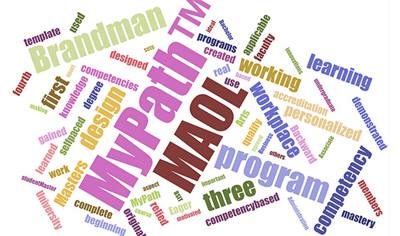 The bell has rung on a new year – a time for reassessing the way things have always been done and trying something new.
The bell has rung on a new year – a time for reassessing the way things have always been done and trying something new.
At Brandman University, nobody waits for the turn of the calendar year to try a new approach. Take, for instance, how the university teaches organizational leadership, an academic topic that has been around for nearly a century.
Now Brandman University is adding a new twist with its competency-based approach to the Master of Arts in Organizational Leadership (MAOL). The program is awaiting final approval, but the university is taking inquiries about enrollment.
The Brandman MyPath™ approach mirrors what faculty member and course creator Laura Galloway, Ph.D., calls some of the most important aspects of leadership, “self-reflection, self-inspection and self-control,” both in content and in what’s required of the students trying a new way of earning a degree.
Brandman MyPath™, an approach to competency-based learning, doesn’t just provide theories and examples of how leadership shapes organizations, it asks students to put those theories to use, demonstrate mastery and analyze the results for a students’ workplace or other organization.
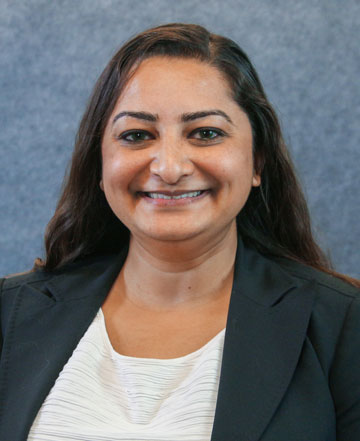
Assistant Dean of the School of Business and Professional Studies Monica Shukla-Belmontes
We talked with Brandman University faculty members and course creators Monica Shukla-Belmontes, Ph.D., Jalin Johnson, Ed.D., and Galloway about what sets the competency-based education apart from Brandman’s blended and online courses, who might best fit this course design and what it takes to be a leader.
The MAOL program is the fourth competency-based program designed by Brandman University and the first to use a template created with knowledge gained from the first three programs (Bachelor of Business Administration, B.S.I.T., and designed but still pending approvals Associate of Arts). Eager to complete the work to qualify for accreditation, all three faculty members said they relied on what they had learned while working on the original undergraduate Brandman MyPath™. Backward design – working from how mastery of the competency could be demonstrated to the beginning – was used in each program.
“It’s a neat process. We work closely with (course) designers,” said Shukla-Belmontes. “We strongly focused on the takeaways for the students and how do we achieve those goals.”
Personalized learning
While innovations in course design are important, all three agreed that it’s the self-paced aspect of competency-based learning that sets this master’s program apart from any others, making it ideal for the motivated student.
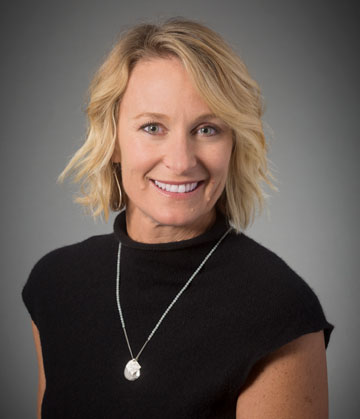
Assistant Professor Laura Galloway
“A student who has had a lot of experience in the workplace can really through these competencies quickly,” said Galloway. “If they want to get through as many as they can in a year, have at it. That’s the great part about it.”
Unlike a traditional program that would have a start and end date for each course, the competency-based program is divided into areas to master, each with assessments along the way. Assessments come in the forms of everything from quizzes to papers to presentations.
“Content-wise, I think it is more robust than the traditional ones are,” said Galloway. “There is no way for students to progress without reading, using and referencing all of the content.”
“There’s a heightened sense of individual self-efficacy,” said Johnson. “Students can see that they understand the competency in their own environment. It’s really good for building a person’s confidence as well as competence.”
All-in-one learning
Content is cross-referenced to traditional MAOL courses, said Shukla-Belmontes, but in the Brandman MyPath™ approach, textbooks are replaced by content embedded into the course.
Each competency builds or scaffolds into the next one so that students are applying both their workplace knowledge and their newly gained academic knowledge as they progress.
Although Brandman MyPath™ is designed without in-person classroom interaction, it still requires and offers ways to interact with other people, a key component of leadership.
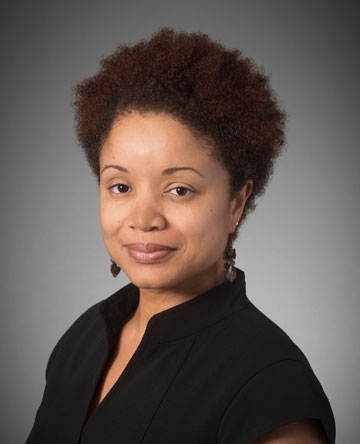
Assistant Professor Jalin Johnson
“Once a month we hold a community meeting,” said Shukla-Belmontes. Those virtual meetings are open to everyone in the course and could address general topics, such as writing skills, or specific ones, such as strategies for being an effective leader. The tutorial faculty works one-on-one, providing feedback as a student works toward mastery. How often a student takes advantage of that is up to the student, another aspect of personalized learning.
For students who aren’t currently working, there are options to reflect on previous employment or volunteer activities. In one competency, a student has to demonstrate how he or she would lead a team through a team-building activity. “We ask people to videotape it, as much as possible, so it’s still hands-on even though it is individually based,” said Galloway.
Any graduate program, whether online, blended or competency-based, should be rigorous and encourage higher-level thinking, said Shukla-Belmontes. “Students like to be challenged.”
What’s great from beginning to end is you are clear and confident about what the student is going to learn,” said Galloway. “If you don’t pass (a competency), you’re redirected to learn it. You can’t say that about regular courses.”
Meet the faculty members
Shukla-Belmontes is the associate dean for corporate pathways and competency-based education in the School of Business and an assistant professor. She created two competencies, one addressing business functions and the other conflict and negotiations.
Johnson is an assistant professor of organizational leadership and created the capstone competency, the final assessment.
Galloway is also an assistant professor of organizational leadership and developed two competencies.
How Stan Lee became an icon and created space for the unseen & underrepresented to lead
Looking at Leadership: How Stan Lee became an icon and created space for the unseen & underrepresented to lead
By Jalin B. Johnson
“Let’s lay it right on the line. Bigotry and racism are among the deadliest social ills plaguing the world today. But, unlike a team of costumed super-villains, they can’t be halted with a punch in the snoot, or a zap from a ray gun. The only way to destroy them is to expose them—to reveal them for the insidious evils they really are. The bigot is an unreasoning hater—one who hates blindly, fanatically, indiscriminately. If his hang-up is black men, he hates ALL black men. If a redhead once offended him, he hates ALL redheads. If some foreigner beat him to a job, he’s down on ALL foreigners. He hates people he’s never seen—people he’s never known—with equal intensity—with equal venom.” (Stan’s Soapbox, 1968)
Marvel Comics icon Stan Lee penned these words, discussing the “deadliest social ills plaguing the world today,” 50 years ago. It is a harsh commentary on our reality that these words are relevant and prevailing even now. This issue of Stan’s Soapbox resurfaced when Lee tweeted out the column on Aug. 15, 2017 after the 2017 “Unite the Right” rally in Charlottesville, Va., and the subsequent violence and loss of life that ensued.
Horrified by what the world witnessed that day – and the excuses made for the reasoning behind the violence in the weeks following – Marvel Entertainment released “A Message from Stan Lee.”
There, he reminds fans and the casual observer of where he and the comic industry juggernaut stand:
“Marvel has always been and always will be a reflection of the world right outside our window. That world may change and evolve, but the one thing that will never change is the way we tell our stories of heroism. Those stories have room for everyone, regardless of their race gender religion or color of their skin. The only things we don’t have room for are hatred, intolerance and bigotry. That man next to you, he’s your brother. That woman over there, she’s your sister. And that kid walking by, hey who knows, he may have the proportionate strength of a spider. We’re all part of one big family, the human family …” (Marvel Entertainment, October 2017).
Sergeant Stanley Martin Lieber, known everywhere as Stan Lee, was born in New York, New York, on Dec. 28, 1922, to Celia (née Solomon) and Jack Lieber. Both were Romanian-born Jewish immigrants. After World War II (Lee served from 1942 to 1945), his story takes twists and turns, full of drama and intrigue, ready for adaptation to the big screen. The reality of his day-to-day life, and occasional controversy, lends itself to characteristics found among the heroes and villains that grace the pages of comics penned by Lee and co-created with fellow comic icons, including illustrators Steve Ditko and Jack Kirby.
Although there are too many characters to choose from, casual and serious fans can find similarities to themselves among Lee’s greatest character collaborations. Whether well-known or lesser-acknowledged characters, many of their alter egos carried the weight of being unseen, under-appreciated and often forgotten.
In a previous “Looking at Leadership,” I marveled as the story of Black Panther was coming to the big screen 52 years after Kirby and Lee introduced him in Fantastic Four #52. While it was not the same year of my own arrival, landing on my birth date made it appear to this fan girl as though it was always meant to be. Other characters, in recent decades, have become legend while exploring gender stereotypes, socio-economic challenges, accessibility and disability, human rights struggles and advocacy for the voiceless. The backstories and cannon behind Jean Grey, The Wasp, Peggy Carter, members of the Avengers and The Fantastic Four, Daredevil and Spider-Man, and their evolving character iterations, have inspired discussions, creating a space to address the very ills that Lee described in Stan’s Soapbox in 1968.
Among the plethora of examples of Lee collaborations, you need only read or listen to Lee’s recent words to understand why he championed the benefit of “reflecting the world right outside our window,” with compassion and understanding, while always remembering the heroes inside and among us.
As you’re Looking at Leadership, and considering what is worth advocating for and supporting with your own voice, allow Lee’s last Instagram post from Sunday, Nov. 11, 2018, the day before he passed at age 95, to encourage you: “Thank you to all of America’s veterans for your service. Fun fact: Stan’s official US Army title during WW2 was ‘Playwright.’ #VeteransDay.”
Jalin Johnson, Ed.D., is an assistant professor in the Brandman University School of Business and Professional Studies focusing on business and
Looking at Leadership: How Stan Lee became an icon and created space for the unseen & underrepresented to lead
#YouToo? When lived experiences and our own awareness pre-date and go beyond a hashtag movement
Looking at Leadership: #YouToo? When lived experiences and our own awareness pre-date and go beyond a hashtag movement
By Dr. Jalin B. Johnson
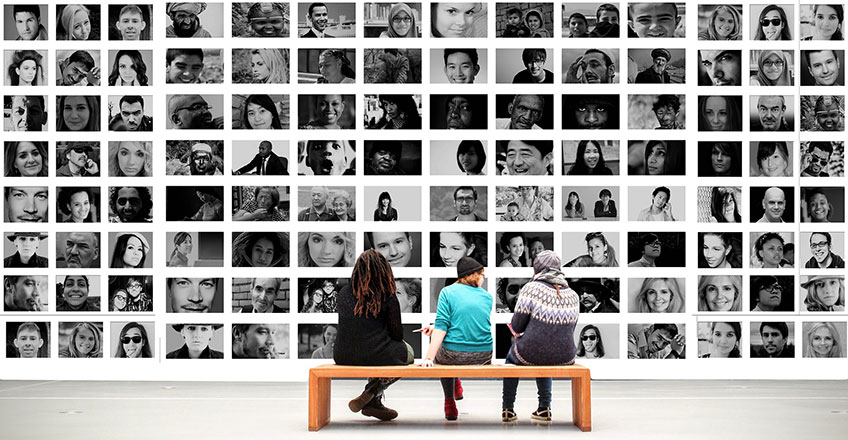
Stop me if you’ve heard this one before: “A group of women and men came together and began sharing their truth…”
One of the challenges we face in higher education is remembering the mantra “With great power, comes great responsibility.” As educators of adult learners, we create a forum for adults, with diverse backgrounds and lived experiences, to come together and share those very truths.
When I first introduced the ECP framework (Experiences, Context & Perspective), during a series of professional leadership conferences (Johnson, 2015), focused on how lived experiences influence the context with which we view any given situation and thus, shape our perspectives, I began to see how people would reflect and re-evaluate “why” they felt the way they did. Whether in the classroom or in a public setting, as educators, we have to recognize that while our platform may be stationary, their lived experiences, context with which our stories are viewed and the shared perspectives of our students, are not invariable.
I had the opportunity to connect with a group of women who have lived experiences that existed prior to what we know as the #MeToo movement and whose perspectives are widely sought, both in the classroom and on the international stage. I asked them about their truths and what was on their minds. Here is what we learned…
These are Challenging Times; Haven’t They Always Been?
Leticia Rojas, Ed.D.
This has been a difficult month – really, a difficult couple of years. My friends and I have reflected and held each other up through what seems like a constant attack on our very beings as women, as people of color, as part of the queer community, as children of immigrants, and as human beings focused on prioritizing people over profit.
On Sept. 27, 2018, I watched Dr. Christine Blasey Ford’s testimony before the Senate Judiciary Committee during the (then) Supreme Court nominee, Judge Brett Kavanaugh’s Sexual Assault Hearing. I did not view it because it was extraordinary or unfamiliar, but rather the opposite, in its commonality among so many women. I held hope that it would make a difference for her and for all the lives of women and other communities affected in future court decisions. The day of the vote, one of my friends texted me that “if someone like Dr. Ford, with all of her privilege and legal counsel, was not to be believed, was it not clear why others with less privilege and more vulnerability to those in power, were afraid to name their oppressors?” We both understood it to be a rhetorical question.
This is a trying time for folks living at the margins who do not fit the mold of those making long-lasting decisions (although I would argue it always has been). But I try to find strength from those who came before me, including my strong Mexican mother and her mother and her mother; women whose stories might not get told and yet are so important to this world and to me. One woman who came before is Tarana Burke, the original #MeToo founder, and in a recent article, Variety (October, 2018), she advocated for a new iteration of the movement, focused on concrete actions and accountability. I am hopeful because of leaders and organizers like her and eager for the next iteration of a movement that is more inclusive and focused on justice. So, I unplug after having refueled, and with others, try to move forward, always.
UsToo, but Are You Ready for Our Stories?
Lata Murti, Ph.D.
I have a confession: I never listened to the Kavanaugh hearing nor the testimony of Dr. Christine Blasey Ford. It is not that I don’t admire Dr. Blasey Ford’s courage, or that I don’t appreciate the significance of her testimony for all women. It’s that her story is still not our story – the story of most of us who do not share her level of privilege.
Our story is one of never being invited or allowed to go to the parties of our wealthy high school and college peers, if we even knew about them. Our story is not having access to alcohol even when with our parents and older relatives, who rarely drink themselves. Our story is never being left alone in a room with a man other than an older male relative and always being escorted by a male relative in public. Our story is dating infrequently and not fully participating in, or benefiting from, the sexual revolution.
Still, Us Too.
Us Too, because at the age of 6, we sat away from our parents and next to a stranger in a dark theater, in order to get a better view of the cultural performance sponsored by our ethnic immigrant community. Us Too, because we were too petite and unpopular for any of our classmates to notice our much taller high school principal touching us inappropriately as he blocked their view in the classroom.
Us Too, because while studying abroad in another country, we decided to share a cab ride home one night with the neighbor who lived down the street from our host family. Us Too, because just a few months later, in the same country, we missed our bus stop, and had to walk alone, at night, through a field, to get to where our mother was staying. Never mind that we were almost fully clothed, in a loose T-shirt and jeans.
But who will hear our stories? The men who are responsible for them will never run for political office in the U.S. Many are poor, don’t speak English, and don’t even live here. Some of us are also poor, don’t speak English, and are not permanent residents of the U.S. Will we have a chance to tell our stories, too? If so, who will listen?
Us Too, but not like you, Dr. Blasey Ford.
‘Otherness’ as Our Strength
Sheila Lakshmi Steinberg, Ph.D.
I am a product of the two largest democracies, India and the United States.
My dad is from Kerala, India, and my mom is from Louisville, Kentucky. In other words; I am “the other.” I was different from many of my classmates and neighbors, throughout my life.
When I got married to my husband, Steve, my dad made an interesting comment at the wedding as part of the formal toast, sharing that I was “both the son and the daughter!” What my dad was indicating was a very cultural approach, that because I was the first-born, their only child and a girl, he raised me with the expectations of achievement and success “as if” I were male.
Females in every society, often face different expectations than males do. This, in itself, was interesting and helped set a high cultural bar for my achievements (beyond gender).
I’ve never really thought about being second place (to my male counterparts), because I was raised to actively compete and participate with them. I have a strong memory of being 3 years old and coming home from preschool upset because they made all of the girls make nurses hats, and all of the boys made doctor’s hats to align with said profession. I had wanted to be a doctor, not a nurse! My dad strongly let the preschool know that it was sexual inequality to enable the boys to only be doctors and girls, only nurses. In the end, I made a doctor’s hat!
For me, it has always been about trying to find a way to be “inclusive” and to make students feel welcomed, embrace our differences and building upon these differences as strengths, avoiding making someone feel like “the other.”
We can be stronger as a nation by embracing our differences. It is essential for our leaders to adopt inclusiveness as part of their toolbox of leadership skills, and to embrace differences as a strength and not as a threat.
Social Constructivism and Human Solidarity
Nakisha Castillo, DMFT
In the Swahili language, the word “harambee” means pulling together. As women we have to gather and examine the reality of the world that we live in and the meaning of being a female. Where does the truth lay for us? Where does our story begin and what part do we omit in order to protect others?
As the hashtag of the #MeToo movement unfolded, the reality of that hashtag changed from #MeToo to #UsToo, as we watch our community become painfully saturated with the stories being told. The hashtag offered an opportunity for women to examine their stories and experiences while in school, within their families, in social gatherings, and in the workplace. The reality of the matter came when we as women began to take a stand and say that our stories will be heard.
A hierarchical social construct, designed to dissociate women of their desires, strong sense of self and self-esteem, gives others the power to take advantage and to narrate our stories. We will not be dismissed. We will not be disrespected. We will not be silenced while our narratives are created for us – while our bodies, minds and abilities are taken advantage of.
As the dialogue surrounding harassment and sexual assault permeates around the globe, we have to find and create a safe space to tell our stories of pain, invisibilities, and exclusion, for ourselves. Stories of being made to feel guilt, shame, fear, and anger will be told. Stories of rising beyond anxiety, depression, and oppression for what others have done. Stories of courage and victory.
As I write, I think of the shared stories of our ancestors, untold for many reasons. Stories of resiliency and strength, without a hashtag to propel their plight.
Stories from a generation where such things weren’t openly discussed. We must take a different path for the next generation, setting aside race, ethnicity, privilege, and culture; agreeing to stand in human solidarity, demanding accountability.
As women I say, “Harambee, harambee,” as we let our voices be heard and share our untold stories.
Moving Forward
Jalin B. Johnson, Ed.D.
With all due respect, our lived experiences began before Alyssa Milano helped to make Tarana Burke’s original 2006 hashtag infamous. You can hear their shared discussion in a recent podcast here – (ACLU, October 2018).
The woman or man sitting across from you as you read this, or the person you had a conversation with after work, has a story that you may never know.
The leadership at your organization may have no idea about what happened to #YouToo and how that lived experience, shapes the context with which you view the many situations you face daily, and your enduring perspective.
There is a reason for that.
As you’re Looking at Leadership, consider the importance of creating and having spaces and opportunities to share your story, and for the stories of others around you, to be heard.
Become aware of what has happened before, what is already taking place, and what exists beyond the hashtag movement.
 Jalin B. Johnson, Ed.D., is an associate professor in the School of Business and Professional Studies at Brandman University, focusing on business and organizational leadership. She is a regular contributor on issues of leadership and current events.
Jalin B. Johnson, Ed.D., is an associate professor in the School of Business and Professional Studies at Brandman University, focusing on business and organizational leadership. She is a regular contributor on issues of leadership and current events.
Looking at Leadership: #YouToo? When lived experiences and our own awareness pre-date and go beyond a hashtag movement
Looking at Leadership: From the crossroads of character, diversity and ethics
Looking at Leadership: What the Oscars have taught us about a hashtag movement, industry ‘firsts’
Looking at Leadership: Lessons from an impatient Padawan
Looking at Leadership: A place where all people feel welcomed
Jalin Johnson speaks on ethics and decision-making
Situational Leadership Theory
The Great Man Theory & Trait Theory
Leader Member Exchange Theory
Brandman University Offers Organizational Development Sessions for Menifee Employees
Team from Brandman introduces CBE program at Professional Development Symposium
WASC conference presenters
Week of Esri conferences begins with focus on education
Johnson, Steinberg lead Lily Conference session on online teaching and learning
Biannual Professional Development Day (2015)
Biannual Professional Development Day (2015)
Dr. Johnson Weebly – BCDC Pilot class
Brandman participants highlight university’s cross-disciplinary approach at conference
Professional Development Day – Adjunct Faculty training (spring 2016)
Biannual Professional Development Day – BU Ontario campus
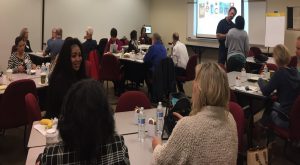
Reina, Ramen, Luna & Wali – Brandman University Mascots
It's #MascotMonday! This week's mascots are Reina, Ramen, Luna, and Wali, submitted by Dr. Jalin Johnson, assistant professor. pic.twitter.com/3x4f0yuZFL
— Brandman University (@BrandmanU) March 13, 2017
How do students describe Brandman faculty? ‘Wonderful,’ ‘caring,’ ‘true leaders’
Ontario campus hosts Professional Development Day (fall 2015)
Faculty members explain how CBE transcends global boundaries
Celebrating BU student success ~ Tamara Frazier RUSD Teacher of the Year
William and Diamond Muganzo ~ Supporting BU student service to the community
Social Science, Media & Culture: Considering the Connections and Media Literacy
Collaboration with Dr. Sheila Lakshmi Steinberg
Welcome to PSYU 355: Media Psychology
Collaboration with Dr. Ellen Derwin
Becoming an Intrepreneur
Collaboration for Dr. Deborah Ferber
Vandalyn Crayton
There is a positive link between adjunct/faculty staff and student retention when efforts are made in conjunction with the advising community. Here at Brandman we have made great strides with the relationship developed between the advising group and our adjunct/faculty personnel. Students have experienced greater success as the lines of communication between the faculty and advisors is prominent ensuring students are staying on task, attending classes, and being plugged into available resources to assist with the day-to-day challenges many students face. I would attribute some of this success to the professional development workshops that have been developed here at our campus. We have faculty, deans, adjuncts, and advisors who attend and brainstorm on how best to address the needs of our students. These developmental workshops give each of us insight to the varying levels of interaction the student might have to better understand their needs and options for solving their educational challenges. Vandalyn Crayton
Literary lessons to keep your ‘mischief managed
By Dr. Jalin B. Johnson

The first time I heard the Sorting Hat in the 2001 film version of “Harry Potter and the Philosopher’s Stone” (known to U.S. audiences as “Harry Potter and the Sorcerer’s Stone), I knew that I had to know which house I would be sorted into. The pomp and circumstance surrounding the sorting ceremony each “Hogwarts first year” student participated in, was enough for this Ravenclaw to be enthusiastic about.
As readers of the J.K. Rowling “Harry Potter” series or fans of the film versions can attest, when you meet a fellow Potter fan, you never know what will happen next in your conversation, but finding out which house they’ve been sorted into is an inevitable part of the discussion.
After first meeting kindred spirits Ellen Belluomini and Julianne Zvalo-Martyn, two of the finest Syltherins I know, I was welcomed with open arms, each of us remembering to “solemnly swear that we were up to no good.”
This summer, as we look at leadership, we join literary admirers of Rowling’s “Harry Potter” series, from around the globe. Scholastic, publishers of some of our favorite classroom magazines, books and educational materials, will also be celebrating the 20th anniversary of the publication of “Harry Potter and the Sorcerer’s Stone” (“Philosopher’s Stone” in the UK), by releasing a “special set of commemorative book covers by Caldecott Medalist, Brian Selznick, as well as the beloved original interior decorations by Mary GrandPré” (Scholastic, 2018).
In honor of this iconic anniversary, we took a look at leadership lessons, gleaned from the stories of Gryffindor house favorites Harry Potter, Hermione Granger and Ronald Weasley, during their seven year journey through Hogwarts.
Leading in Difficult Times
by Ellen Belluomini, Ph.D.
Leadership isn’t just about forging the path ahead.
The best leaders work within diverse groups, where allowing for disagreement acts as a system of checks and balances. Irving Janus studied the impact of intensely stressful situations on group cohesion in military conflicts which ended poorly, developing the theory of group think. The Harry Potter series is a study in how leaders who welcome diversity and differences improve decision making and outcomes in their organizations.
Leaders Set the Tone: An Autocrat Returns
Voldemort, the villain in the “Harry Potter” series (who is in the process of achieving resurrection in the first four books), creates an army of followers set on the genocide of anyone not of “pure magical” bloodlines.
After his return, it is clear that descent within Voldemort’s ranks may mean annihilation. In reality, authoritarian leaders may not directly imprison or kill, but their isolated decision-making through group conformity leads to dire circumstances. Behaviors of group think are epitomized by ”hive-mind thinking,“ an illusion of invulnerability, and disloyalty in disagreement. Ultimately, in the Potter series, Voldemort’s return leads to the group’s demise.
Power is in the Discourse
The magical community begins to collaborate in the fourth book, “Goblet of Fire,” marking a turn in unity and in leadership. Here, the Hogwarts faculty, students, families and concerned magical citizens unite their diverse talents, and begin to take down Voldemort. Their success is highlighted through group problem-solving where each member is free to object and express doubt. We should note that the wizarding community obliterated a proliferation of hate with organized teamwork and sacrifice, proving that love really does win.
When leaders have feelings
Harry, Hermione and Ron may be magical, but they suffer and feel pain all the same. As sensitive, passionate young people, they are sometimes overwhelmed with hurt feelings, despair and fear. Ron is overcome with jealousy when Hermione goes to the ball with Cedric. Ron and Hermione stop speaking when it seems her cat eats Ron’s rat. Harry feels despair when locked up at his Muggle (non-magic) relatives’ house. They are all afraid when fighting trolls or otherwise confronting their enemies.
Walking through
Harry and friends suffer, but they persist through their suffering. When hurt, they may lash out. When fearful, they may try to escape, like Ron did after a fight with Harry during a long and arduous journey. But like all strong leaders, Ron eventually faces his fear, returning to save his friend. Ron, Hermione and Harry must constantly work through powerful, sometimes painful feelings, to return to their mission.
Sensitivity as strength
For the characters in Harry Potter, sensitivity cannot be squashed, but rather serves as a foundational strength. Their bravery comes straight out of tremendous love for others. Harry’s mother fought off Voldemort and died protecting him. Harry and Ron did not hesitate to rescue Ginny from the “Chamber of Secrets,” though facing most certain death. Hermione stayed by Harry’s side during his darkest moments, even though she suffered from painful abandonment herself.
Harry’s battles with Voldemort are frightening and unrelenting. Preceding the final battle, Harry initially cowers in fear and feels the demon of inadequacy, as many leaders do. In the end, his tender feelings of love for his friendsfills him with the willingness to give his own life so that they may live. In the end, leaders persist. Because in the end, feelings save the day.
Knowing when to do the right thing
In reading Belluomini and Zvalo-Martyn’s Potter reflections, I’m reminded that recognizing when to “do the right thing,” takes great strength.
Do you remember the time when Neville Longbottom, Gryffyndor first year, earned 10 points for his house, standing up to Harry, Hermione and Ron, when he knew they were up to no good? Doing so, when it may have cost him friendships.
I find parallels as I watch heads of state turn away when the shameful actions of some of their fellow leaders are on display. When the voiceless are in need of advocacy, when the poor and destitute need a champion, but are left with cowardice; I realize that the world needs more Nevilles.
While you manage your own mischief this summer, consider reading Rowling’s iconic “Harry Potter” series, or catch up on the films. We’d love to hear what house or character lessons inspire you, as you’re looking at leadership.
 Dr. Jalin B. Johnson
Dr. Jalin B. Johnson
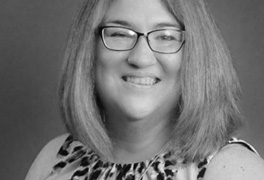 Dr. Ellen Belluomini, LCSW
Dr. Ellen Belluomini, LCSW
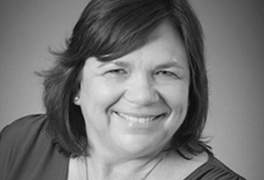 Dr. Julianne Zvalo-Martyn
Dr. Julianne Zvalo-Martyn
International Conference on Diversity in Organizations, Communities and Nations
“Diversity to Inclusion: Integrating Elements of Diversity Into Curriculum and Facilitation that Fosters an Inclusion Learning Community”
Dr. Laura Galloway,Dr. Jalin B. Johnson and Dr. Monica Shukla-Belmontes present at the 2018 the International Conference on Diversity in Organizations, Communities and Nations
June 2018
 Faculty members Nakisha Castillo, DMFT; Kathleen Ringenbach, Ph.D.; Jalin Johnson, Ed.D.; Laura Galloway, Ph.D.; and Monica Shukla-Belmontes, Ph.D., participated in the 18th International Conference on Diversity in Organizations, Communities & Nations at the University of Texas in Austin held June 6-8.
Faculty members Nakisha Castillo, DMFT; Kathleen Ringenbach, Ph.D.; Jalin Johnson, Ed.D.; Laura Galloway, Ph.D.; and Monica Shukla-Belmontes, Ph.D., participated in the 18th International Conference on Diversity in Organizations, Communities & Nations at the University of Texas in Austin held June 6-8.
Faculty members Monica Shukla-Belmontes, Ph.D.; Laura Galloway, Ph.D; and Jalin Johnson, Ed.D., at the International Conference on Diversity in Organizations, Communities and Nations.
Castillo and Ringenbach’s team presentation, “Creating a Pathway of Connections: Interracial Mentoring Through Instrumental Versus Relational Perspectives,” looked at ways to mentor new faculty of color in the academic environment.
Johnson, Galloway and Shukla discussed “Diversity to Inclusion: Integrating Elements of Diversity Into Curriculum and Facilitation that Fosters an Inclusion Learning Community.” They discussed how diversity of thought, culture, background and experience need to be considered against the backdrop of diverse cultures and societies in different geographic areas. Professor Sheila Steinberg, Ph.D., contributed to the report.
Founded in 2000, the conference brings together scholars, government officials and practice-based participants with an interest in the issues of diversity and community. “Being surrounded by academics, scholars, practitioners, attorneys and researchers, most of whom lead their respective institution’s departments and divisions of diversity, inclusion and equity, was an incredible experience. We both contributed to and learned a great deal from our international peers,” said Johnson.
Experience, Context and Perspective; Connecting with our students, hearing their stories & cherishing the narrative

‘A place where all people feel welcomed’
Looking at Leadership: ‘A place where all people feel welcomed’
By Dr. Jalin B. Johnson

Outgoing Starbucks Executive Chairman Howard Schultz at the 2018 Shareholders meeting. Photo courtesy of Starbucks.
“I remember when a nickel would get you a cup of coffee and a good conversation.”
These are familiar words and yet they represent a reality that has long since passed us by. Today, a $4 cup of coffee is readily available at your local drive-thru cafe and may, in part, go towards much needed health insurance for a part-time barista.
Shortly before 7 a.m. on Tuesday May 29, 2018, I received “an open letter from Howard Schultz, ”who through the end of June is the executive chairman at Starbucks, a place I have frequented for several years.
In this letter, Schultz shared with millions of Starbucks’ external stakeholders, his inspiration and vision for the coffee house we now know today to be an internationally regarded fan favorite and one that is competitive in major markets around the globe.
He also discussed his ‘disappointment’ in a recent incident at a Starbucks Philadelphia location.
On April 12, 2018, Holly Hylton, manager of the Rittenhouse Square Starbucks, called the police on two 23-year-old entrepreneurs, Donte Robinson and Rashon Nelson, as they waited at a table before the start of a business meeting. Robinson and Nelson were soon arrested while waiting for their business associate. The incident was caught on camera by patrons at the location. Hylton was fired shortly thereafter.
Schultz’s early morning letter conveyed the steps that he and the other members of Starbucks’ leadership had taken after this incident and those that they continue to take in an effort to ensure that their locations are known as “a place where all people feel welcomed.”
On the afternoon of May 29, 2018, Starbucks chose to close its doors to begin “racial bias training,” with a desire to “set the foundation for a longer-term Starbucks anti-bias, diversity, equity, and inclusion effort,” according to a Starbucks press release.
It is important to note that Starbucks is not the first organization to institute similar training (proactively or reactively). This also comes amidst criticism from some who say that in firing the Rittenhouse Square manager, leadership acted hastily. It is however evident that examples of character and collective wisdom guided executives and stakeholders at Starbucks to go beyond simply disseminating a “vaguely worded” apology.
Proponents of Starbucks’ efforts have pointed out that their swift action separated them from Facebook, Uber and United Airlines, who recently suffered through PR nightmares due to their own actions, or inaction, while in the midst of a crisis.
Starbucks’ efforts to go “beyond the apology” began with a call to action and a request for guidance.
As leaders of people, organizations and communities, we have a responsibility to acknowledge when we don’t have all of the answers. Lying when we lack knowledge or “flying off the cuff” are not admirable behaviors, they are ignorant. We can learn from those who have walked the roads before us and seek input from those who are advocates for the voiceless.
Starbucks CEO Kevin Johnson began by apologizing to Robinson and Nelson. He then offered condemnation of the incident and chose to take ownership of what took place in Philadelphia. Top down-leadership sets an example, and for better or worse, subordinates will, more often than not, follow your lead.
Johnson soon asked for dialogue with Robinson and Nelson, requesting their insight. He did so, choosing not to offer excuses. He determined it meaningful to learn and grow and to not repeat a failure.
Members of the Starbucks leadership team, including Schultz, Johnson and Rosalind Brewer, chief operating officer and group president for Starbucks, sought guidance, forming an advisory committee for the Racial-Bias Training. Brewer shared with CNBC, ahead of the May training, “let us be the example of what diversity looks like…we have the ability to start a national conversation.”
Members of the Advisory Committee (Starbucks newsroom, 2018) included:
- Bryan Stevenson, founder and executive director of the Equal Justice Initiative;
- Sherrilyn Ifill, president and director-counsel of the NAACP Legal Defense and Education Fund
- Heather McGhee, president of Demos
- FormerU.S. Attorney General Eric Holder will serve as a key external advisor on the long-term diversity and equity efforts.
- Starbucks will also consult with a diverse array of organizations and civil rights experts, including The Anti-Defamation League, The Leadership Conference on Civil and Human Rights, UnidosUS, Muslim Advocates, and representatives of LGBTQ groups, religious groups, people with disabilities, and others.
While the effects of the May 2018 training may take time to materialize, the impact that the actions of those in leadership positions at Starbucks will have, should tell a story within the organization and infuse a larger narrative for years to come.
Starbucks’ leadership hopes to be an example in a climate where other companies are being challenged to be aware and to do more to develop this narrative of awareness and sensitivity within their organizational culture.
In recent months, companies including Airbnb, Waffle House, Nordstrom Rack, Pennsylvania’s Grandview Golf Club and LA Fitness have faced similar internal dialogue.
Academic institutions including Yale, Colorado State University and the University of Florida are re-examining the way belonging and otherness are addressed on their campuses.
Powerhouses Disney, ABC and Pixar have had to reconcile with how to model leadership astuteness, after canceling Rosanne and evaluating the employment of John Lasseter.
Each of these organizations are faced with a leadership choice; ignore when implicit bias, discrimination or questionable behavior has taken root and led to scandal or accept failures and try to be better moving forward.
Consider how your preferred coffee shop or other local businesses that you frequent fair at making people feel welcomed. The next time you’re sharing a cup of coffee and a good conversation, continue the discussion as you’re “Looking at Leadership.”
 Jalin B. Johnson, Ed.D., is an associate professor in the School of Business and Professional Studies at Brandman University, focusing on business and organizational leadership. She is a regular contributor on issues of leadership and current events.
Jalin B. Johnson, Ed.D., is an associate professor in the School of Business and Professional Studies at Brandman University, focusing on business and organizational leadership. She is a regular contributor on issues of leadership and current events.
AAUW Brandman members start diversity and academia conversation
AAUW Brandman members start diversity and academia conversation
May 31, 2018 by Cindy O’Dell
Brandman University’s virtual branch of the AAUW left the online world in May to hold an in-person forum on diversity. More than 70 people attended the forum in Irvine, including faculty members, administrative leaders and staff members.
The Forum on Diversity and Inclusiveness offered a safe space for people of diverse backgrounds to talk about issues surrounding diversity and inclusion and overcoming social and academic barriers. The AAUW’s goal was to generate a pathway for resolving challenges associated with diversity in higher education and academia, said the organizers.
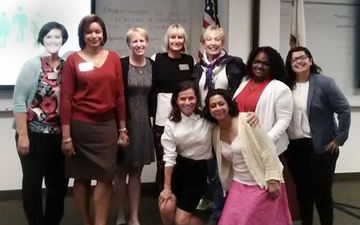
From left, standing: Tami Lincoln, Jalin Johnson, Lynn Larsen, Laura Galloway, Helen Eckmann, Nakisha Castillo, Leticia Rojas. Front: Kimberly Greene, Lata Murti. Not pictured: Randa Jad-Moussa.
The committee organizing the event included AAUW branch members from across disciplines:
- AAUW branch President –Tami Lincoln, Ed.D.
- AAUW branch Diversity Chair –Jalin Johnson, Ed.D.
- Lynn Larsen, Ph.D.
- Laura Galloway, Ph.D.
- Helen Eckmann, Ed.D.
- AAUW branch Financial Secretary –Nakisha Castillo, DFT
- Leticia Rojas, Ed.D.
- Kimberly Greene, Ed.D.
- Lata Murti, Ph.D.
- Randa Jad-Moussa
‘Our university has always prided itself on its diverse student body. Our students come from diverse backgrounds and experiences, and our faculty and staff honor that diversity by coming together to share ideas about diversity and inclusion,” said Lincoln. “The forum was an opportunity to build community within our institution, and in the end, that community better serves our students.”
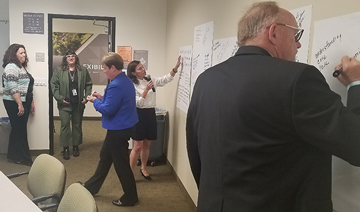
Faculty members wait their turn to add comments on diversity and inclusion experiences.
“The questions, prompts and discussion format provided participants the opportunity to critically look at issues in our household, community and the world we share,” said Assistant Professor Hawani Negussie. “I found reflections expressed by individuals to be moving … the space we exist in at any time benefits from the representation of diverse thoughts to mitigate implicit and explicit biases.”
Others called the event powerful, timely, surprisingly relaxed and a chance to recognize how their backgrounds inform their decisions.
Those attending engaged in three discussions: defining diversity from a personal perspective, real-world examples of inclusiveness and its impact on a situation, and planning toward solutions and efforts that drive curriculum.
“During my ten years as a member of the Brandman University community, I have yet to see such an inspiring collection of shared wisdom, cross-disciplinary cohesion, selfless discussion, awareness building and purposeful listening, among our peers (while outside of the classroom environment), as I did during our first Forum on Diversity and Inclusiveness,” said Johnson, who facilitated the event.
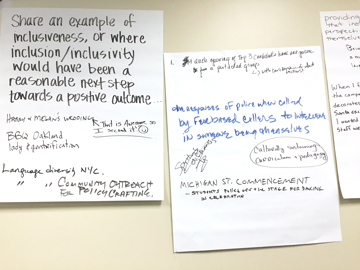 “It is very easy (and often comfortable) to remain in a silo without challenging our biases and comfort levels. Today, we began a discussion and took a powerful step towards challenging assumptions. I look forward to our continued goal setting and action towards positive and inclusive next steps.”
“It is very easy (and often comfortable) to remain in a silo without challenging our biases and comfort levels. Today, we began a discussion and took a powerful step towards challenging assumptions. I look forward to our continued goal setting and action towards positive and inclusive next steps.”
The voluntary event was held just before the start of the spring faculty retreat to give those who work at remote campuses a chance to attend in person.
“This was a was powerful experience! I saw humanity and felt the compassion in the voices of my colleagues. By the end of the session, there was a shift in the room, that moved towards the opportunity for change to occur,” said Castillo.
AAUW Brandman members start diversity and academia conversation
May 31, 2018 by Brandman University
Brandman University’s virtual branch of the AAUW left the online world in May to hold an in-person forum on diversity. More than 70 people attended the forum in Irvine, including faculty members, administrative leaders and staff members.
The Forum on Diversity and Inclusiveness offered a safe space for people of diverse backgrounds to talk about issues surrounding diversity and inclusion and overcoming social and academic barriers. The AAUW’s goal was to generate a pathway for resolving challenges associated with diversity in higher education and academia, said the organizers.

From left, standing: Tami Lincoln, Jalin Johnson, Lynn Larsen, Laura Galloway, Helen Eckmann, Nakisha Castillo, Leticia Rojas. Front: Kimberly Greene, Lata Murti. Not pictured: Randa Jad-Moussa.
The committee organizing the event included AAUW branch members from across disciplines:
- AAUW branch President –Tami Lincoln, Ed.D.
- AAUW branch Diversity Chair –Jalin B. Johnson, Ed.D.
- Lynn Larsen, Ph.D.
- Laura Galloway, Ph.D.
- Helen Eckmann, Ed.D.
- AAUW branch Financial Secretary –Nakisha Castillo, DFT
- Leticia Rojas, Ed.D.
- Kimberly Greene, Ed.D.
- Lata Murti, Ph.D.
- Randa Jad-Moussa
‘Our university has always prided itself on its diverse student body. Our students come from diverse backgrounds and experiences, and our faculty and staff honor that diversity by coming together to share ideas about diversity and inclusion,” said Lincoln. “The forum was an opportunity to build community within our institution, and in the end, that community better serves our students.”

Faculty members wait their turn to add comments on diversity and inclusion experiences.
“The questions, prompts and discussion format provided participants the opportunity to critically look at issues in our household, community and the world we share,” said Assistant Professor Hawani Negussie. “I found reflections expressed by individuals to be moving … the space we exist in at any time benefits from the representation of diverse thoughts to mitigate implicit and explicit biases.”
Others called the event powerful, timely, surprisingly relaxed and a chance to recognize how their backgrounds inform their decisions.
Those attending engaged in three discussions: defining diversity from a personal perspective, real-world examples of inclusiveness and its impact on a situation, and planning toward solutions and efforts that drive curriculum.
“During my ten years as a member of the Brandman University community, I have yet to see such an inspiring collection of shared wisdom, cross-disciplinary cohesion, selfless discussion, awareness building and purposeful listening, among our peers (while outside of the classroom environment), as I did during our first Forum on Diversity and Inclusiveness,” said Johnson, who facilitated the event.
 “It is very easy (and often comfortable) to remain in a silo without challenging our biases and comfort levels. Today, we began a discussion and took a powerful step towards challenging assumptions. I look forward to our continued goal setting and action towards positive and inclusive next steps.”
“It is very easy (and often comfortable) to remain in a silo without challenging our biases and comfort levels. Today, we began a discussion and took a powerful step towards challenging assumptions. I look forward to our continued goal setting and action towards positive and inclusive next steps.”
The voluntary event was held just before the start of the spring faculty retreat to give those who work at remote campuses a chance to attend in person.
“This was a was powerful experience! I saw humanity and felt the compassion in the voices of my colleagues. By the end of the session, there was a shift in the room, that moved towards the opportunity for change to occur,” said Castillo.
Lessons from an impatient Padawan
Looking at leadership: Lessons from an impatient Padawan
By Dr. Jalin B. Johnson
Eight and three.
Those were the ages of me and my brother when we earned our first lightsabers. They were toys, but as far as we were concerned, they were the tools of a true Jedi apprentice.
Delivering random sentences in the speech pattern of Master Yoda was not uncommon in our household. And, for whatever reason, any of us could quickly spot an Ewok through the dense forests on Endor or a Tauntaun through a fog of snow on Hoth (which if you know anything about Tauntaun biology isn’t really that difficult).
It was decades later when I realized that my own “Star Wars” fan-girl experiences were actually a conduit to a number of life lessons originally instilled by our parents. Following Joseph Campbell’s (1949) concept of a “Heroes Journey,” “Star Wars” creator George Lucas follows the trials and tribulations of an impatient Padawan (Luke Skywalker), during his quest as an apprentice to become a Jedi knight. This story, as its ongoing iterations continue to display, had a lot to tell us about mentorship, principles and integrity.
As we approach this year’s “Star Wars” Day (May 4th), and think of creative ways to work “may the fourth be with you,”into a conversation, let’s take a moment and look at some of the lessons learned through the eyes of a Padawan on his journey to become a Jedi knight:
- Mind your elders.When Uncle Owen and Aunt Beru Lars warned Luke to think of his future, they had no idea of how perilous his endeavors might be. It was however, solid advice.
- Collect mentors. Never forget Ben (Obi-Wan) Kenobi – need we say more?
- Good friends are built to last. (Pun intended). C-3PO and R2-D2 became two of the most treasured supporters of Luke during his quest.
- Don’t judge a book by its cover.Surviving on whit and overcoming a life of crime (after being orphaned as a young boy), the Corellia-born Han Solo made his way to becoming one of the best pilots in the galaxy. After a brief encounter in the Mos Eisley cantina on Tatooine, what began as a quick (17k credits worth) journey to Alderaan, turned out to be a force for change. Han Solo and Chewbacca became two unlikely, yet important figures during Luke’s formidable Padawan years.
- Just as wisdom is a gift, patience is acquired. Master Yoda had this in droves and Luke’s short time with him was invaluable. The Jedi master’s sage advice at the conclusion of Luke’s training in the swamps of Dagobah, is not easily forgotten – “Do. Or do not. There is no try” (“The Empire Strikes Back”)
- Be mindful of the company that you keep.While it is safe to say that Luke and Grand Moff Tarkinspent little time together during the Padawan’s journey, he was a forbidding adversary and deserves a mention. Appointed to take the lead in the creation of the Death Star, Tarkin was feared and revered by members of both the Empire and the Resistance. In proving his might, (spoiler) he used the Death star to destroy Alderaan, later dying along with his command, when the Death Star was destroyed.
- “Stay on target.” Although Gold Leader Five is infamous for uttering these words, we learn from Luke (Red Five) that it is okay to stay the course and lead from behind. (I suppose that it doesn’t hurt to have the voice of your mentor in your ear during the mission).
- If at first you don’t succeed… (Spoiler) Some may say that it takes Luke until “Return of the Jedi (episode VI)” to achieve Jedi status (and successfully face his father, Lord Vader). However, his trials are an example of perseverance.
Join the discussion this May 4thand test your “Star Wars” knowledge. Share the lessons you learned from Luke’s journey while you were looking at leadership.
WASC conference presenters share Brandman’s path to an Ed.D. dissertation, faculty development
Brandman’s innovative approaches to its Doctor of Education in Organizational Leadership and to improving professional development for adjunct faculty members were the focus of presentations at the 2018 WASC Senior College and University Commission’s Academic Resource Conference.
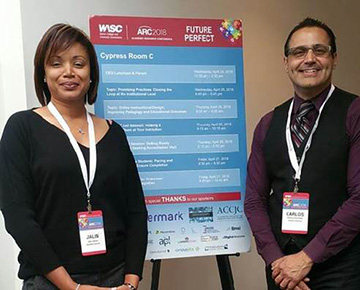 With the theme “Future Perfect,” the conference centered on the nature and quality of teaching and learning at the university level and showing how that leads to greater student achievement.
With the theme “Future Perfect,” the conference centered on the nature and quality of teaching and learning at the university level and showing how that leads to greater student achievement.
Faculty members Jalin B. Johnson, Ed.D., from the School of Business and Professional Studies and Carlos Guzman, Ph.D., from the School of Education shared the data they collected over a four-year span that focused on the confidence doctoral students had in their abilities to complete various tasks before and after taking the prospectus writing course.
WASC conference presenters and Brandman faculty members Jalin Johnson, Ed.D., and Carlos Guzman, Ph.D.
“Increasing the potential for doctoral students to successfully complete their dissertations; a curriculum driven self-efficacy study” found significant increases in confidence for such things the ability to generate a purpose statement, align research questions, establish significance and synthesize the literature.
A second presentation focused on efforts to help adjunct faculty members from four campuses in two counties develop their teaching and technology skills and help students succeed. Johnson, Leticia Rojas, Ed.D., and Nicole Schneider, Ed.D., both from the School of Education presented “Faculty Professional Development; a multi-discipline, interactive faculty training initiative geared towards enriching and enhancing the instructor pedagogy experience.” Lynn Larsen, Ph.D., from the School of Education and Nakisha Castillo, DMFT, from the School of Arts and  Sciences also contributed to the report.
Sciences also contributed to the report.
Jalin Johnson, Nicole Schneider and Leticia Rojas
Among their findings:
- Need for connections to others in the adjunct community is evident.
- Contact with the campus team is invaluable.
- Small working groups produce significant results.
- Professional Development Days have a positive impact on campus culture.
- Better informed adjuncts equal better student experiences.
- Recognition is well received.
They also touched upon how they facilitate the content covered and how they offer career education units, guest speakers, community-based service and student-centered initiatives.
What the Oscars have taught us about a hashtag movement, industry ‘firsts’
Looking at leadership: Oscars edition
By Dr. Jalin B. Johnson
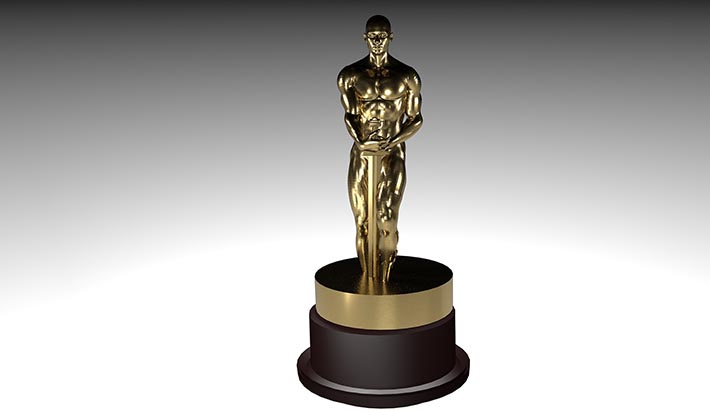
It may not surprise you that in 2018, we are still recognizing a litany of entertainment industry“firsts.” MCU fans are still over the moon because of Black Panther (2018), passing the 1.25 billion mark in ticket sales, preparing to be “the biggest grossing movie ever to A) not (be) released on that pre-Christmas weekend and B) make all its money in a single calendar year” (Forbes, 2018). The magnitude and global attention to such firsts has Hollywood under more of a spotlight than some other career fields. Amidst ongoing scrutiny, the entertainment industry celebrates its own, (whether we follow them or not), via live telecasts, radio broadcasts and dedicated media outlets. The Oscar ceremony is no exception.
This year, advertisers joined the celebration to the tune of $2.6 million. That was the asking price, on average, for “a 30-second (ad) spot … a jump from $1.91 million in 2017…(when) ABC generated $128 million (from that year’s) telecast” (Reuters, 2018).
Advertisers paid more for a 30-second spot this year (to reach a reported 26.5 million viewing households), than they did for the same air time during last year’s telecast, which reached close to 40 million homes.
It has not gone unnoticed that during a steady decline in the telecast’s viewership, industry leaders have faced an uphill battle regarding their emphasis on equity, diversity and inclusion, enhanced in recent years by the power of social media and a 24-hour news cycle.
Controversies are nothing new to the Academy of Motion Picture Arts and Sciences. Those currently in key leadership roles are being scrutinized by members of their community to see how they handle each new crisis. The academy was founded in 1927 by former MGM studio chief Louis B. Mayer and close friends. Actor Douglas Fairbanks was their first elected president, (feel free to take a moment to add the 1920s versions of Robin Hood and the Three Musketeers to your Netflix queue). In those early years, however, some of the biggest Oscar hoop-la may have surrounded the introduction of the sealed envelope in 1940. Previously, winners were published in the LA Times before the gala.
Fast-forward eight decades and a new generation of industry leadership has been tested, having faced “#OscarsSoWhite,” the “Harvey Weinstein scandal,” and “#MeToo.” Most recently, AMPAS President John Bailey faced allegations of sexual misconduct, stemming from a complaint deriving from an incident on a movie set 10 years ago. Hollywood has been the base camp for many a rallying cry for social and humanitarian change, along with their fair share of protests. One journalist wrote, “Oscars…Conservatives, liberals, filmmakers. Who isn’t boycotting? (Gomez, 2017).”
While each of these turning points have shifted culture and consciousness, it is not lost on avid moviegoers and casual fans alike, that the outcry for diversity and inclusion may continue to grow as long as there are firsts to be recognized. With much talk and little action, there are new calls for results yielding equity and representation.
Viewership of the Oscar ceremony may be down, but consumer interest via varying forms of media, are much more targeted with the use of streaming services, mobile apps and the like. Consumers are speaking through their pocketbooks, tablets and TV remotes. Their viewing habits are letting Hollywood know that they wish to see themselves on screen and to hear their stories told via representation in front of and behind the camera.
This was evident the morning after the 2018 Oscars ceremony when Merriam-Webster (dictionary) reported that “inclusion” was their top search of the night, followed by cinematography (see the list of 2018’s Oscar’s “firsts” below and see if you have found a pattern). This search for inclusion came shortly after Frances McDormand’s Oscar acceptance speech (for best actress) where she referenced the term “inclusion rider.” The term, which she herself admitted was new to her, derived from the work of USC’s Stacy L. Smith and the Annenberg Inclusion Initiative (2017). In short, their research found what many in the moviegoing public have been saying to entertainment industry leaders: “Tell our story.”
Between now and the next Oscars telecast, you have plenty of time to decide what the entertainment industry has to offer you. You can thoughtfully determine what humanitarian movements you wish to champion and which awards shows you choose to ignore. In the meantime, consider engaging in the discussion. You may find something else that deserves the spotlight, as you’re looking at leadership.
Below are some of 2018’s Oscars “firsts” that will hopefully one day, seem as insignificant as (apparently) this year’s telecast proved to be (by the millions):
- Greta Gerwig was the first female director to land a best director nomination for her directorial debut with “Lady Bird.” (Kathryn Bigelow became the only woman to win the statue at all, for “The Hurt Locker” in 2010).
- Rachel Morrison became the first and only woman to ever be nominated for best cinematography for her work on “Mudbound.”
- James Ivory, who wrote the adapted screenplay for “Call Me by Your Name” at age 89, became the oldest person to ever win an Oscar.
- Mary J. Blige became the first woman to be nominated for best supporting actress and best original song in the same year.
- “Get Out” director Jordan Peele became the first African-American to win for best original screenplay.
- Ziad Doueri’s “The Insult” became the first Lebanese film to be nominated in the foreign-language film category.
- Yance Ford became the first openly transgender filmmaker to have a film nominated.
- Christopher Plummer, at age 88, became the oldest actor nominee in the history of the Oscars.
- (For all of my fellow superhero fans), “Logan” scored a nomination for best adapted screenplay, becoming the first live-action superhero film to do so (Eonline, 2018).
 Jalin B. Johnson, Ed.D., is an associate professor in the School of Business and Professional Studies at Brandman University, focusing on business and organizational leadership. She is a regular contributor on issues of leadership and current events.
Jalin B. Johnson, Ed.D., is an associate professor in the School of Business and Professional Studies at Brandman University, focusing on business and organizational leadership. She is a regular contributor on issues of leadership and current events.
Interdisciplinary team earns Brandman group a ‘Happy Customer’ nod from Esri
March 16, 2018 by Cindy O’Dell
 A team from Brandman, including faculty, staff and a student, represented the university at Esri’s Education Open House earlier in March.
A team from Brandman, including faculty, staff and a student, represented the university at Esri’s Education Open House earlier in March.
Lindsay Yossef, Katy Curameng, Melissa Meyer, Jalin Johnson, Jennifer Woodward and Sheila Steinberg at the Esri Higher Education Open House.
Brandman’s innovative collaboration with Esri for curriculum design and delivery put the university in the “Happy Customer” category along with nine other organizations, agencies and international groups.
Attending from Brandman were Katy Curameng, director of Career Services; Sheila L. Steinberg, Ph.D., professor of social and environmental sciences at Brandman; Lindsay Yossef, Ed.D., instructional designer for the Center for Instructional Innovation; Jalin Johnson, Ed.D., assistant professor in the School of Business & Professional Studies; Melissa Meyer, J.D., assistant professor in the School of Arts and Sciences; and Jennifer Woodward, an undergraduate student majoring in integrated social science and whose coursework used Esri geographic information systems mapping and analytics software.
“As a novice to GIS, it was exciting to see the live demonstrations. We learned about its applications and job prospects for the future. Esri was very welcoming to the Brandman team,” said Meyer.
“It was impressive to watch how Esri uses GIS in action and learn more about the skills and opportunities this technology can provide to our students in reaching their career goals. Hearing about the work ESRI is doing to bring in and support new professionals in this field through various programs was extremely inspiring,” said Curameng.
In addition to presentations about ArcGis Learn, Living Atlas and the “Science of Where,” the Brandman team learned about potential career and internship options for students at Esri.
The university and Esri are partnering on creating programs for undergraduate and graduate students, as well as a certificate program for nonprofits. For additional information about the nonprofit certificate program, sign up for a webinar here.
Inland Empire adjuncts build teaching skills with help from full-time faculty
March 12, 2018

Patrick Pierson, Ontario campus director, and faculty members Nicole Schneider, School of Education; Leticia Rojas, School of Education; Jalin Johnson, School of Business and Professional Studies and Jonathan Greenberg, School of Education, were among those leading breakout sessions for adjunct faculty members.
Learning about best practices isn’t just for Brandman students. Twice a year, adjunct faculty members from the Ontario, Victorville, Riverside and Menifee campuses gather to improve their teaching skills with help from full-time faculty members.
The most recent session focused on best practices such as the best ways for
- Supporting students
- Developing synchronous and asynchronous classroom techniques
- Becoming ADA compliant in the classroom
- Making full use of Blackboard technology and embedding interactive web-based tools
- Using Live Text technology and support.
More than 45 adjunct faculty and clinical coordinators attended the sessions at the Ontario campus.
They also reviewed academic integrity and APA formatting. Speakers and breakout session facilitators were
- Patrick Pierson, Ontario campus director
- Jalin B. Johnson, Ed.D., School of Business and Professional Studies faculty
- Leticia Rojas, Ed.D., School of Education faculty
- Nicole Schneider, Ed.D., School of Education faculty
- Barbara Bartels, Ed.D., assistant vice chancellor of Community Relations and Strategic Business Development
- Jonathan Greenberg, Ed.D., School of Education, adjunct and Ed.D. cohort mentor

Johnson said feedback included appreciation for getting a chance to share problems and solutions with peers and the introduction of new teaching strategies.
“This is my sixth year facilitating and being a part of the planning team for this bi-annual event. Our adjunct faculty and clinical coordinators do so much for our students. We are pleased to give them something additional in return,” said Johnson.
Looking at leadership: Wakanda edition
From the crossroads of character, diversity and ethics
 By Dr. Jalin B. Johnson
By Dr. Jalin B. Johnson
I once read a story about a great leader. His realm and its people were known for technological advancement, resource wealth, innovation and for having a great sense of pride. After a series of tragic losses, his newfound leadership was put to the test. With a diverse group of elders, dynamic women and crime-fighting colleagues, by his side, he overcame obstacles and became legend. His exhibition of strategy and international diplomacy are characteristics that would be wisely modeled after by today’s career politicians and novices alike.
As a scientist and one who is known for ethical principal and sharing his unique skill sets with his associates and peers (like minds, striving to make the world a better place than it was when they entered it), he is a coveted friend and ally.
First debuting in July of 1966 (Marvel Comics: Fantastic Four #52– Jack Kirby and Stan Lee), this example of ethically driven leadership, T’Challa, now makes his big screen debut (as the lead) in “Black Panther” (Disney-Marvel, 2018).
While release of the film coincides with Black History Month in the U.S., the film rightly celebrates excellence of character, diversity and ethical standards, each of which transcend color, ethnic background, gender and the like.
It should not be lost however, that this predominantly cast of color, tells the story of T’Challa (Black Panther), whose entire royal guard is fierce and unapologetically all female. After the release of “Wonder Woman” (DC and Warner Bros, 2017), the world embraced woman as purveyor of justice, allowing the box office ($412 million gross domestically) to do the talking.
The “Black Panther,” as of two weeks prior to this years’ Feb. 16 opening, already spoke via the box office, breaking all-time records for pre-release ticket sales. According to Variety, “Fandango is reporting that presales for ‘Black Panther’ are now outpacing advance sales for all other first-quarter releases in (Disney-Marvel’s) 18-year history.” Starring Chadwick Boseman, “Black Panther” is also on pace to be Fandango’s top pre-seller among all superhero titles. “It’s not just a superhero movie, it’s a ground-breaking cultural event,” Fandango managing editor Erik Davis told Variety.
The cast, also offers diversity in ethnic background from acting and directing (Ryan Coogler) to production of the soundtrack and musical score. Thus reminding Hollywood that multiplicity and collaboration do indeed create blockbusters and transcend boundaries at the ticket window.
Celebrating diversity (currently spotlighted in the entertainment industry) is a theme that often requires more than subjective interpretation. Personal awareness, surrounding ourselves with and listening to others whose ideas differ from our own, applying ethical and moral standards in our execution of said ideas, having and modeling principled character, are all part of what make these leadership traits so important. These qualities are not only to be seen on the big screen, as movie goers will do when watching “Black Panther,” but also in our daily lives.
Celebration of women and people of color goes beyond what may be highlighted during one month or day of the year, but at any time while amongst our friends, neighbors and colleagues; allowing for reciprocation and appreciation for one another, regardless of background, socioeconomic boundaries, gender or held stereotypes and implicit biases.
Consider being a part of the discussion this February, share an example of someone who exemplified principled character, embraced diversity and lead with ethical principles at the forefront. You may find commonalties among you as you’re looking at leadership.
 Jalin B. Johnson, Ed.D., is an associate professor in the School of Business and Professional Studies at Brandman University, focusing on business and organizational leadership. She is a regular contributor on issues of leadership and current events.
Jalin B. Johnson, Ed.D., is an associate professor in the School of Business and Professional Studies at Brandman University, focusing on business and organizational leadership. She is a regular contributor on issues of leadership and current events.
How to sound supervillain savvy at this year’s Comic-Con
July 19, 2017 by Jalin B. Johnson, Ed.D.
 You wouldn’t have a story without the good vs evil, but beyond the entertainment factor, have you dug deep into the bad guys’ backstories and explored what makes them tick?
You wouldn’t have a story without the good vs evil, but beyond the entertainment factor, have you dug deep into the bad guys’ backstories and explored what makes them tick?
While it may seem unconventional, we can learn a good deal about ourselves by looking at the ethical reasoning behind decisions made by some of pop-cultures reigning supervillains.
Yes, villains have ethics!
There is a psychological and a philosophical reason behind every decision a supervillain makes. The psychological part suggests how we create ethical judgments and the philosophical part shows how we justify these ethical judgments. Here’s a breakdown of a few of our top modern-day supervillains:
Vulture
In the 2017 Jon Watts Marvel Studios, Columbia Pictures and Pascal Pictures addition to the Spider-Man franchise, we are introduced to Vulture (alias Adrian Toomes). As in the Marvel comic character’s canon, Toomes battles his own demons; wavering at times between villainous ways and the righteous path.
In the cinematic version, he is an ‘everyday,’ hardworking guy who feels unfairly treated and cast-aside by the government. When presented with the opportunity to get ahead on his own terms, Toomes leads a team of other outcasts to reclaim leftover alien weaponry and parts in an effort to sell them on the underground market. His philosophical belief that he was wronged, leads him to break the rules set by the very government he protests, thus leading him into a life of crime.
Ares
In the 2017 Patty Jenkins DC Entertainment & Warner Bros. produced Wonder Women film, we see the how the perils of war influence the ethical reasoning behind our heroes featured nemesis. Although in New 52 DC canon, Wonder Woman (Diana) is the daughter of Zeus and Hippolyta (of Themyscira), in this cinematic box office hit, Diana is the daughter or Ares.
Focused on the mid to late 1930’s rise of Adolf Hitler and the Nazi regime, Ares (alias’ Sir. Patrick and God of War), hones in on the trouble with humanity – its taste for violence and destruction. On a campaign to prove his theory that this evil tendency resides in all of mankind, Ares, while living as Sir Patrick, rises in the ranks of the British government, increasing his psychological influence on others along the way. His ethical reasoning yields to decisions to both empower humans with weapons of mass destruction while watching them self-destruct to prove his point.
Ego
Likewise, within the 2017 James Gunn directed sequel of the big screen Guardians of the Galaxy series (Marvel Studios), there are some changes to canon to help show the conflict between right and wrong.
In the Dan Abnett and Andy Lanning created comics, our main character, Star Lord, is the son of J’son of Spartax. In the Guardians Vol. 2 adaptation, Star Lord (alias Peter Jason Quill), is the son of Ego.
A supervillain, set to maintain his legacy in the cosmos, Ego has made it his life’s work to create an offspring worthy of his gifts. He has decided that traveling the planets to find a partner with which to create a new life is a sound decision if only to meet his ultimate goal. His philosophical premise is that it is for the greater good, while showing little concern for those he leaves behind while on his quest.
In each of these snapshots, we see how ethical reasoning overshadows care and concern for others in the lives of some of pop-cultures reigning supervillains. Share with us how you relate to these – and other – comic supervillains. What are your ethics, and how do you justify them?
Reina, Ramen, Luna & Waliochaguliwa (Wali) in the news…
Council of College and Military Educators conference
Council of College and Military Educators (CCME) conference – “Collaboration: Strengthen Ourselves for Those We Serve”
March 2017

Nirmala Sharma, Glenn Worthington and Jalin B. Johnson recently participated in the Council of College and Military Educators Symposium in Atlanta, Georgia. The conference theme was “Collaboration: Strengthen Ourselves for Those We Serve.” Sharma is the assistant vice chancellor for Military Services, Worthing is the dean of the School of Business and Professional Studies and a military veteran, and Johnson is an associate professor in the business school. Session topics included making the transition from military service to related careers, leveraging technology, raising awareness of campus programs and support for online students.
Virtual Learning – Best practices targeted during Inland Impire Professional Development Day
May 17, 2016
By Brandman University
More than 40 people from throughout Southern California participated in the May 14 Professional Development Day at Brandman University’s Ontario campus.
Academic advisors and campus directors from Ontario, Riverside, Menifee, Victorville, Irvine and the online campus joined adjunct faculty, full-time faculty and campus clinical coordinators from those campuses to learn more about teaching tools such as Blackboard and Adobe Connect, as well as teaching strategies and campus updates.

Event presenters: Dr. Jalin B. Johnson, Dr. Laura Galloway, Dr. Leticia Rojas , Dr. Nicole Schneider, Dr. Annie Hough-Everage, Campus Director Patrick Pierson, Campus Director Kristin Plapis, Associate Dean Lynn Larsen, Dr. Kimberly Greene
The event also gave the group a chance to honor retiring faculty members Dr. Annie Hough-Everage and Dr. Raymond Hurst, both from the School of Education.
“We are fortunate to have a diverse Professional Development Day (PDD) planning team. Our goal is to offer a rich array of content twice a year to our adjunct faculty, campus clinical coordinators and academic advisors in attendance as a part of our shared learning environment,” said Dr. Jalin B. Johnson, assistant professor in the School of Business and Professional Studies and event facilitator.
Engaging and Motivating Diverse Students Across Multiple Learning Platforms –
Monica Shukla, Jalin B. Johnson and Sheila Lakshmi Steinberg presented an interdisciplinary session, “Engaging and Motivating Diverse Students Across Multiple Learning Platforms,” at the recent Lily Conference on Teaching and Learning held in Anaheim, California.

Shukla is an associate dean in the School of Business and Professional Studies, Johnson is an assistant professor of business and organizational leadership in the business school and Steinberg is a professor of social and environmental science in the School of Arts and Sciences.
The presentation discussed the role that institutional demographics and diversity play in enhancing the learning environment. It also focused on presenting strategies to motivate adult learners to overcome challenges when returning to the educational environment after a break in education or when going from active military duty to civilian life.
It demonstrated tactics to engage students across multiple learning platforms, blended, online and competency-based. All three presenters have taught across the trifecta of Brandman’s multiple learning platforms and degree, enabling them to accurately share their real-world experience across a variety of classroom and individualized learning environments.
Brandman faculty, administrators attend national conference on education and equality
January 26, 2016 by Cindy O’Dell
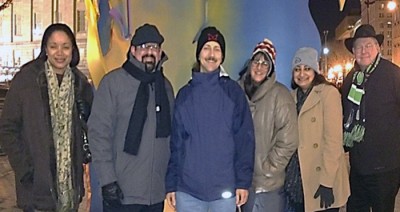
Jalin B. Johnson, Ned Camuso, Jeremy Korr, Sheila Lakshmi Steinberg, Monica Shukla and Michael McGuire.
Faculty members and administrators from the School of Business and Professional Studies and the School of Arts and Sciences braved the winter weather in Washington, D.C., over the weekend to participate in the annual meeting of the Association of American Colleges and Universities (AACU). The conference theme was “Land of Opportunity – But for Whom? How Higher Education Can Lead on Equity, Inclusive Excellence and Democratic Renewal.”
Dr. Jeremy Korr, dean of the School of Arts and Sciences, led a discussion seminar on “What is College,” focusing on identifying the characteristics of high-quality undergraduate college experience regardless of technological modality. Seminar participants included Dr. Monica Shukla, associate dean of the School of Business and Professional Studies; Dr. Ned Camuso, associate dean of Arts and Sciences; and Dr. Michael McGuire, associate dean of Arts and Sciences In a team presentation, Dr. Sheila Lakshmi Steinberg, professor of social and environmental sciences; Dr. Jalin B. Johnson, assistant professor of business and organizational leadership; and Shukla led a 75-minute interactive session, “Societal Needs, Student Questions and General Education: Making Connections through Online Competency-based Education,” discussing, among other topics, the progress Brandman University has made in the area of competency-based education with the MyPath program.
The conference was held Jan. 20-23.
Ethics 101 – Cindy O’Dell’s interview with Dr. Jalin
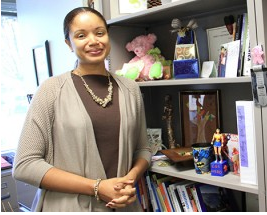
Americans with Disabilities Act (ADA) compliance – focus of biannual Professional Development Day
November 17, 2015
By Brandman University

Professional Development Day at Ontario campus.
The Ontario campus of Brandman University hosted a Professional Development Day and adjunct faculty meeting on Nov. 14.
The keynote speaker for the day was Dr. Loren O’Connor who talked about Americans with Disabilities Act (ADA) compliance and the services offered by the department he leads, the Office of Accessible Education and Counseling Services.
The day also included updates from each of the colleges presented by full-time faculty members, as well as system-wide and campus updates presented by Patrick Pierson, campus director in Ontario.
“All in all it was an energy-filled day of recognition, shared best practices and networking for the full-time faculty, adjuncts, academic advisors, senior administration from Irvine, School of Education teacher supervisors and Outreach team members from Ontario, Riverside, Menifee, San Diego, Irvine and Online campuses,” said Dr. Jalin Johnson, who helped coordinate the event.
Additional resources were sent virtually to those unable to attend.
Curriculum Development: Ethics & J.E.D.I. – Higher education & within the workplace
![]()
- J.E.D.I. Competent Curriculum Review & Support Process
- Diversity Cognizant Curriculum Development; a view through the Experience, Context and Perspective (ECP) Framework
- Diversity & Representation in Course Development
- Diversity, Politics & Leadership: Why Cognizant Leaders know Diversity Counts – Keynote / Seminar
- Ethics in Leadership – Employee, Management & Leadership Development
- Ethics 101: The Significance of Maintaining High Ethical Standards in the Workplace’
- Equity and Intersectionality: Considering Student Identities and Experiences
Guided Trainings
- Conflict Management – Employee, Management & Leadership Development
- ‘College readiness and collegiate expectations’
- Equity & Representation in Curriculum development
- Professional Development (PD) Adjunct Faculty – Workshops
Consulting & Facilitation
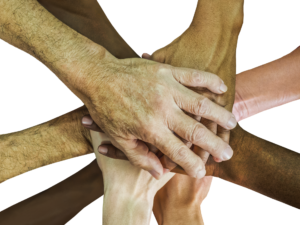
- ‘Diversity, Politics and Leadership: Why Cognizant Leaders Know Diversity Counts’ – Keynote / Seminar
- “Effective and Efficient Engagement Best Practices for Online Teaching and Learning’
- Emotional Intelligence (EI): Strategies for Employees, Management and Administrators – EI review / Assessment based workshop
- Ethical Decision making for leadership: Empirical Inquiry and Review – Government employees / Corporate governance
Presentations & Facilitations

-
An Investment in Innovation is an Investment in People: How Our Course Developer Certification Program Transformed Faculty, Their Perception of Diversity Cognizant Curriculum and Their Efforts in Course Development – WASC Senior College and University Commission conference
- Diversity, Politics and Leadership: Why Cognizant Leaders Know Diversity Counts – (Keynote)
- Experience, Context and Perspective; Connecting with our students, hearing their stories & cherishing the narrative’ – (Keynote) Academic Advisor Summit
- From Diversity to Inclusion: Integrating Elements of Diversity into Curriculum and Facilitation that Fosters an Inclusion Learning Community – Diversity in Organizations, Communities & Nations International conference
- From Mentee to Mentor: Using CRM Solutions and Our Diverse Campus Community to Build a Successful Mentorship Pipeline Technology – Hawaii International Conference on Education
- Faculty Professional Development; a multi-discipline, interactive faculty training initiative geared towards enriching and enhancing the instructor pedagogy experience – WASC Senior College and University Commission conference
- Increasing the Potential for Doctoral Students to Successfully Complete their Dissertations; a Curriculum Driven Self-Efficacy Study – WASC Senior College and University Commission conference
- Competency-based Education: Engaging Active Duty and Veteran Students through Technology- Hawaii International Conference on Education
- Societal Needs, Student Questions and General Education: Making Connections through Online Competency-Based Education – Association of American Colleges and Universities: Annual meeting
- Examining a Competency Based Education Approach to Global Learning- Association of American Colleges and Universities: Global Learning conference
Brandman University Offers Organizational Development Sessions for Menifee Employees – MenifeeBuzz.com
Brandman University Offers Organizational Development Sessions for Menifee Employees
Tuesday, 24 February 2015 23:15
Brandman University has reached out to local governmental officials to support the professionalism and management qualities of the city’s officials. Currently, the university’s Menifee Campus has formulated a program designed to uplift the officials’ experience via a group of leadership and management sessions, reportedly expected to be 90 minutes in length each.
The program serves to benefit both parties, offering classes to city leaders, which ultimately benefit the community and raise awareness in the area about the types of courses the university is offering.
Brandman University steadily works on developing business courses that many in the immediate area may not be aware of. The new program opens up a flow of networking between menifee residents and officials promoting the university’s course.
According to Miguel Aranda, the Menifee Campus Site Director, the city has also agreed to implement Brandman University’s advertising campaign into their “Menifee Matters” magazine, a monthly issue of menifee activities delivered to residents and business owners of the city.
The program was devised by both the campus site director and the senior aide to the city manager, Gina Gonzalez, after she had expressed interest in possibly providing growth and development opportunities to the city’s employees.
Brandman University’s program is already in progress with Aranda having presented the first two courses geared towards customer service and enhancing the customers experience. The second session revolved around situational leadership. As of February 1st, he is expected to present the third session next week on the 10th, which will encompass organizational communication, effective listening and strategies for communication.
Aranda’s past experience in public speaking and engaging with small companies trying to upscale their customer service and internal motivation efforts, makes him a grand candidate to lead this section of the series. According to him, the series has been well received by Menifee employees (40), with between 20 and 30 of them participating in the sessions.
Aranda currently has plans to possibly expand the series offerings to nearby towns such as Temecula.
The calendar’s fourth event is scheduled for April 7; Dr. Jalin Brooks Johnson and Laura Galloway will be leading the session providing a look into the history of organization development, via the university’s OLCU 615 course.
This session will also provide an overview of basic concepts relating to organization development and principles.
Dr. Tamerin Cappelino will be leading the final session which will focus on self-learning. Dr. Cappelino is the Assistant Professor of Education at Brandman University.
Maintaining currency

Dr. Jalin has maintained a focus on professional development and continuous improvement by participating in trainings and workshops to enhance her skill set and knowledge base in a number of areas. Some of these areas are noted here;
Asynchronous
- Studio – Blackboard enhancement– Center for Instructional Innovation
- Online Instruction certification – Brandman University
- Adobe Connect Instruction workshop
- Zoom interface and instruction tools
Course Development
- Applying the Quality Matters Rubric training
- Brandman Course Development Certification (BCDC)
- Kaltura/Interactive Multimedia-Based Instructional Design (IMBID) workshop
- Quality Matters – Quality Matters Rubric Certification
Professional Development & Certifications
- Academic Integrity – (BU) Governance and Appeals training
- Conflict Resolution workshop series
- Doctor of Education in Organizational Leadership Dissertation Chair training
- National Institutes of Health (NIH), Protecting Human Research Participants
- Quality Matters – Building an Ecosystem of Supports for Higher Education Faculty (Waldron)
- Quality Matters and CourseArc for Course Design
- Quality Matters – Research & Innovation Webinars
- ‘When the Published Becomes Personal: Challenges of Public Scholarship for Members of Marginalized Communities’ – (Lopez & Kattari) Diversity Scholars Network – The National Center for Institutional Diversity (NCID)
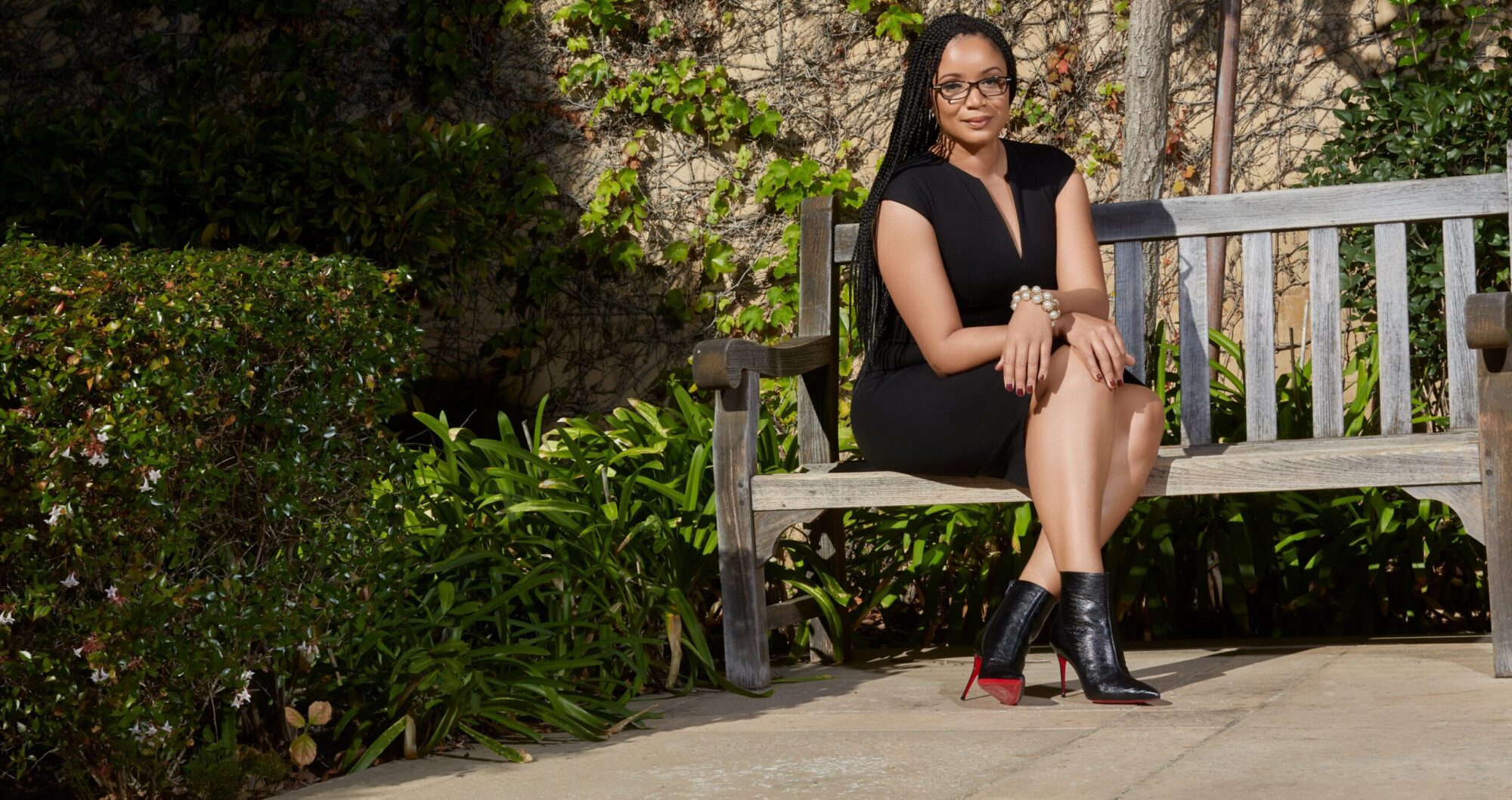
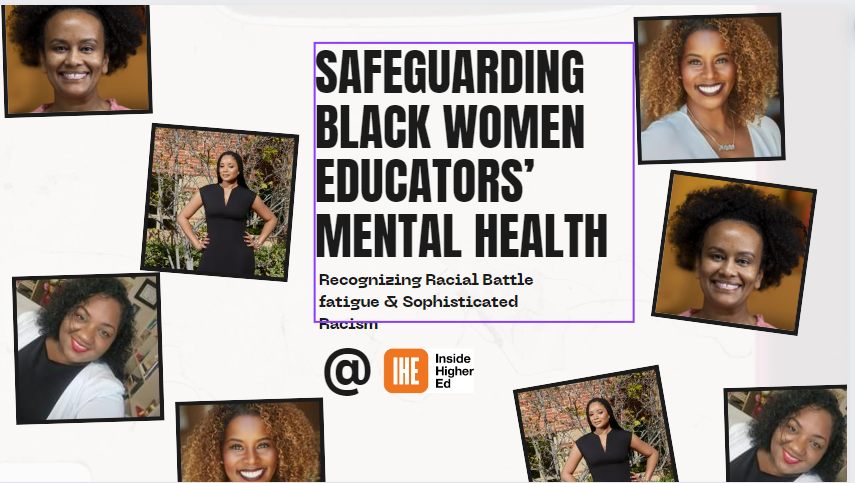
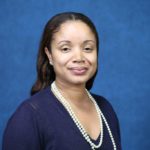 Find Dr. Jalin B. Johnson at DrJalin.com
Find Dr. Jalin B. Johnson at DrJalin.com 

